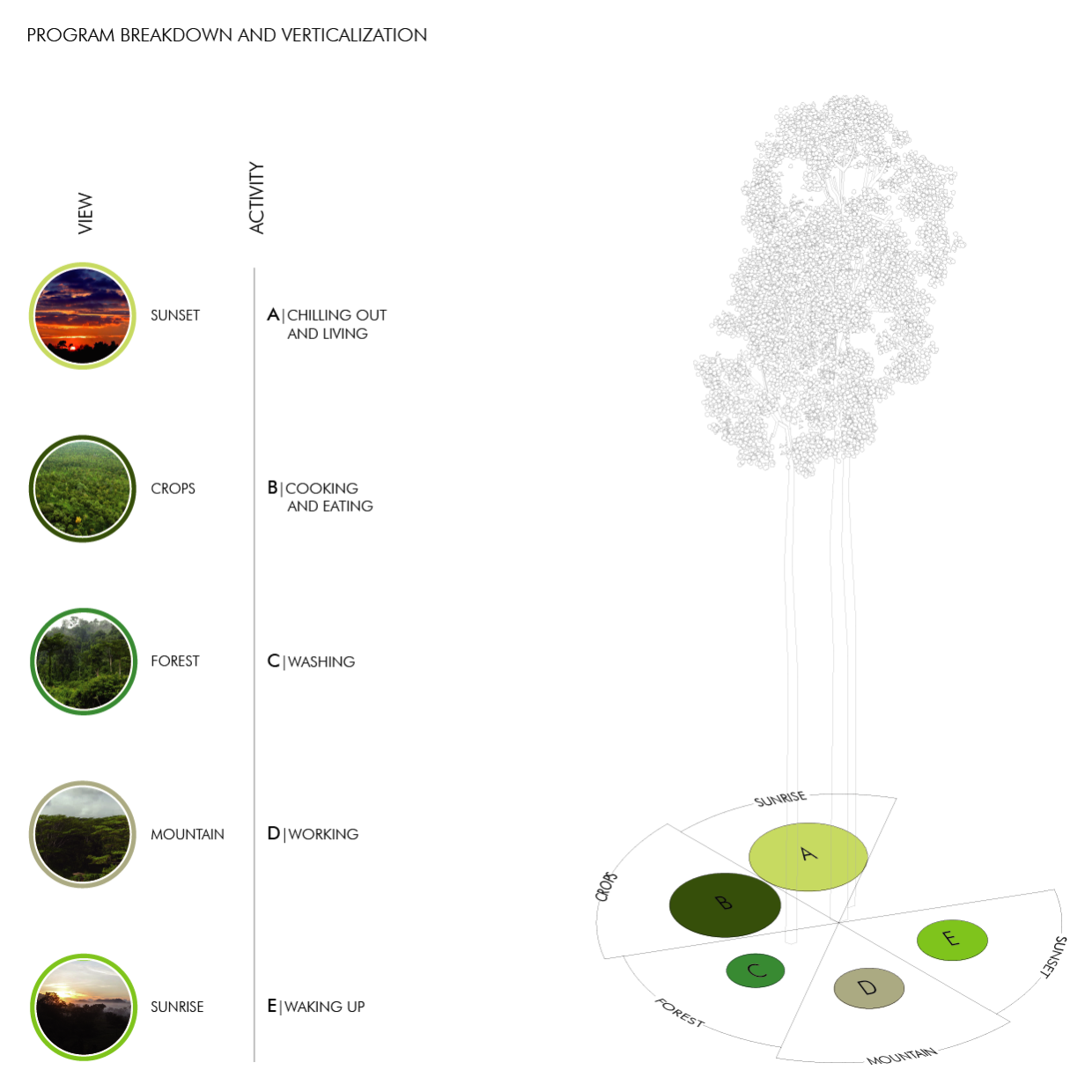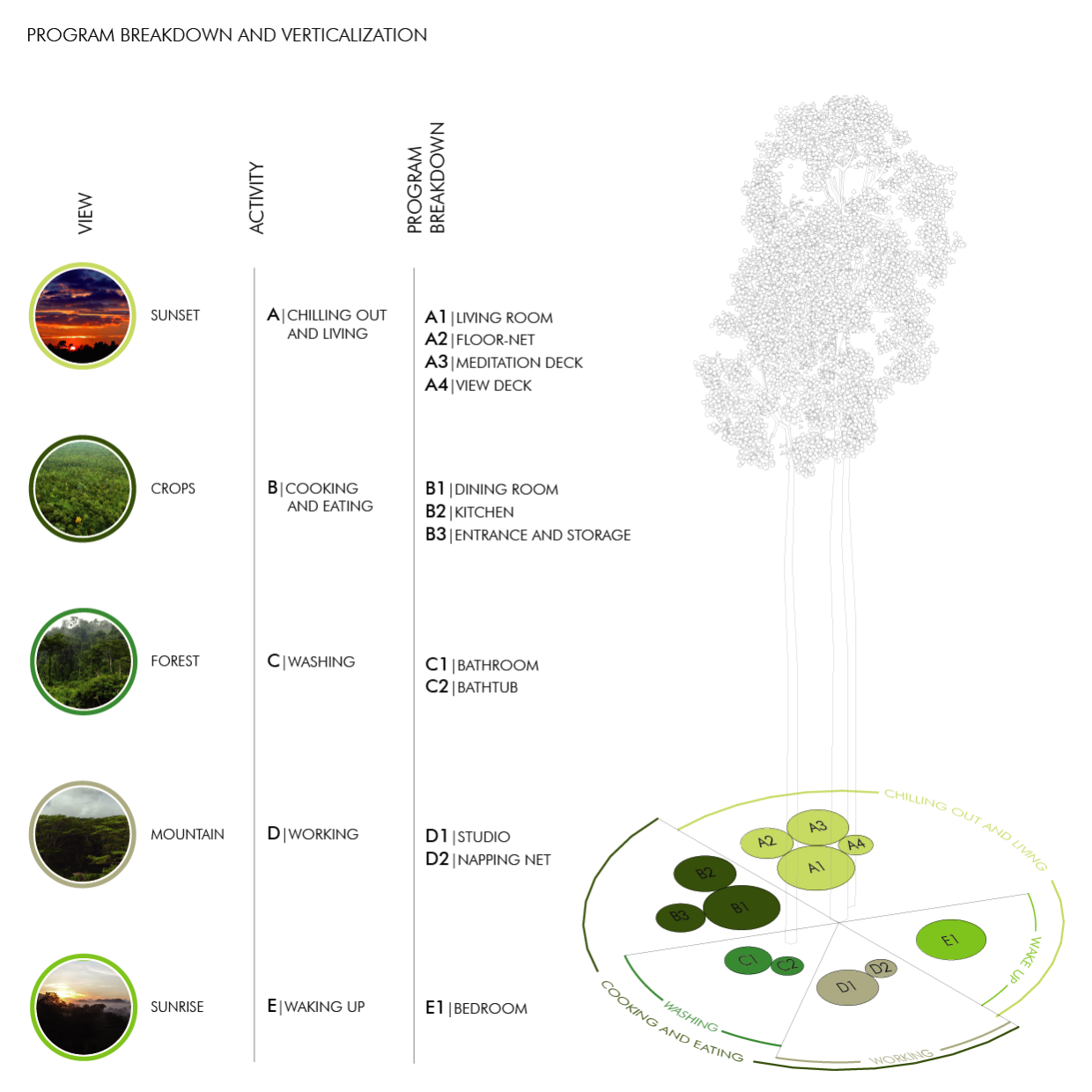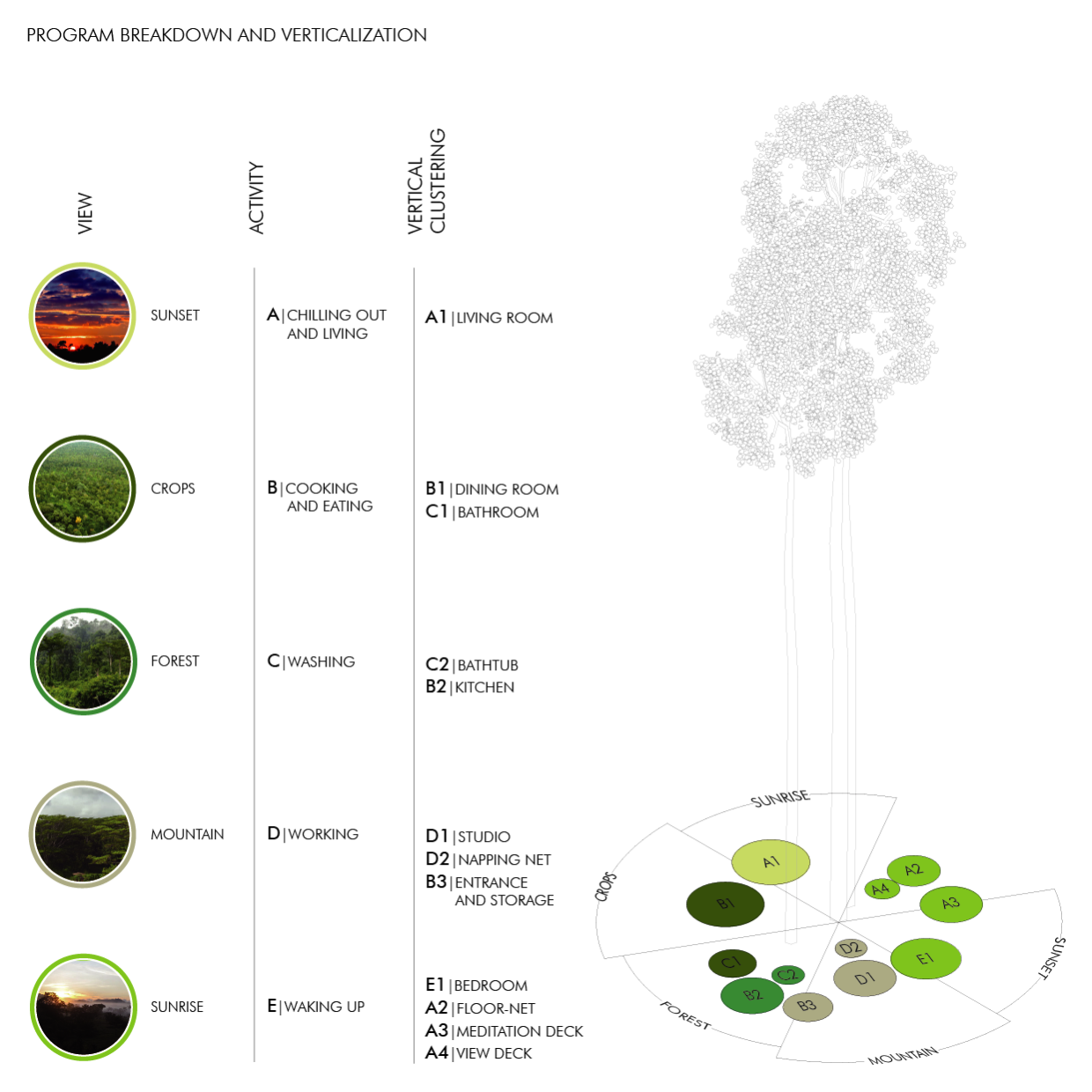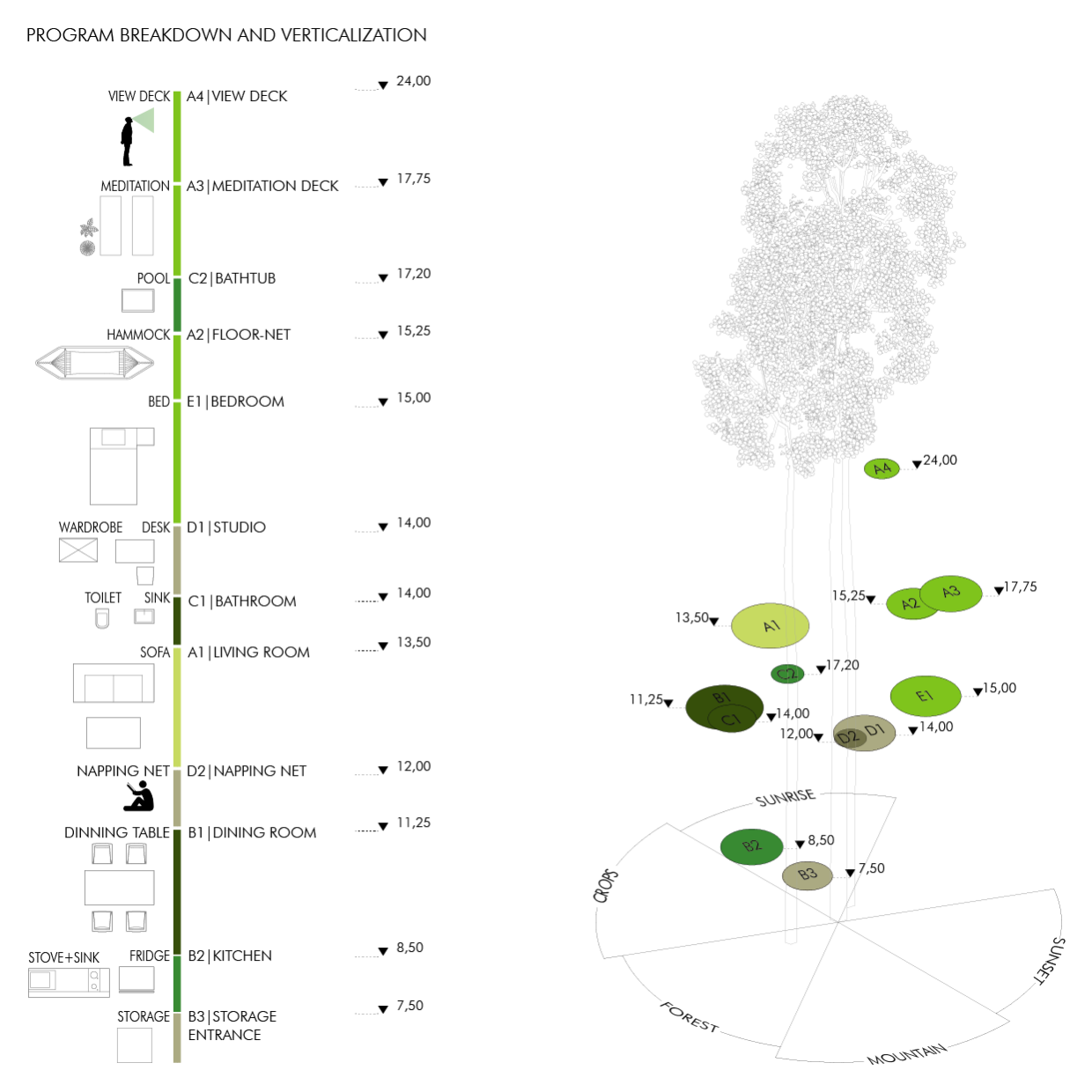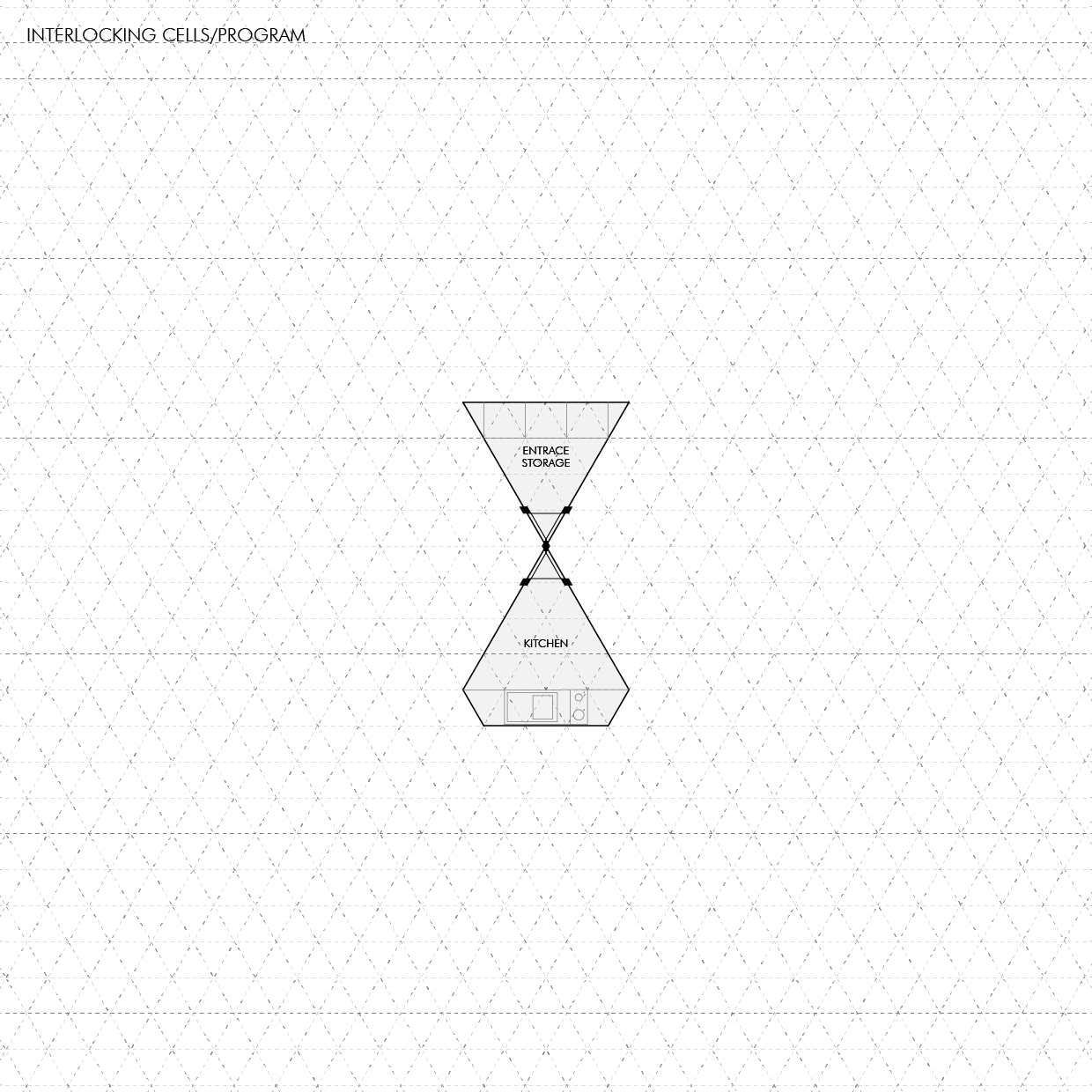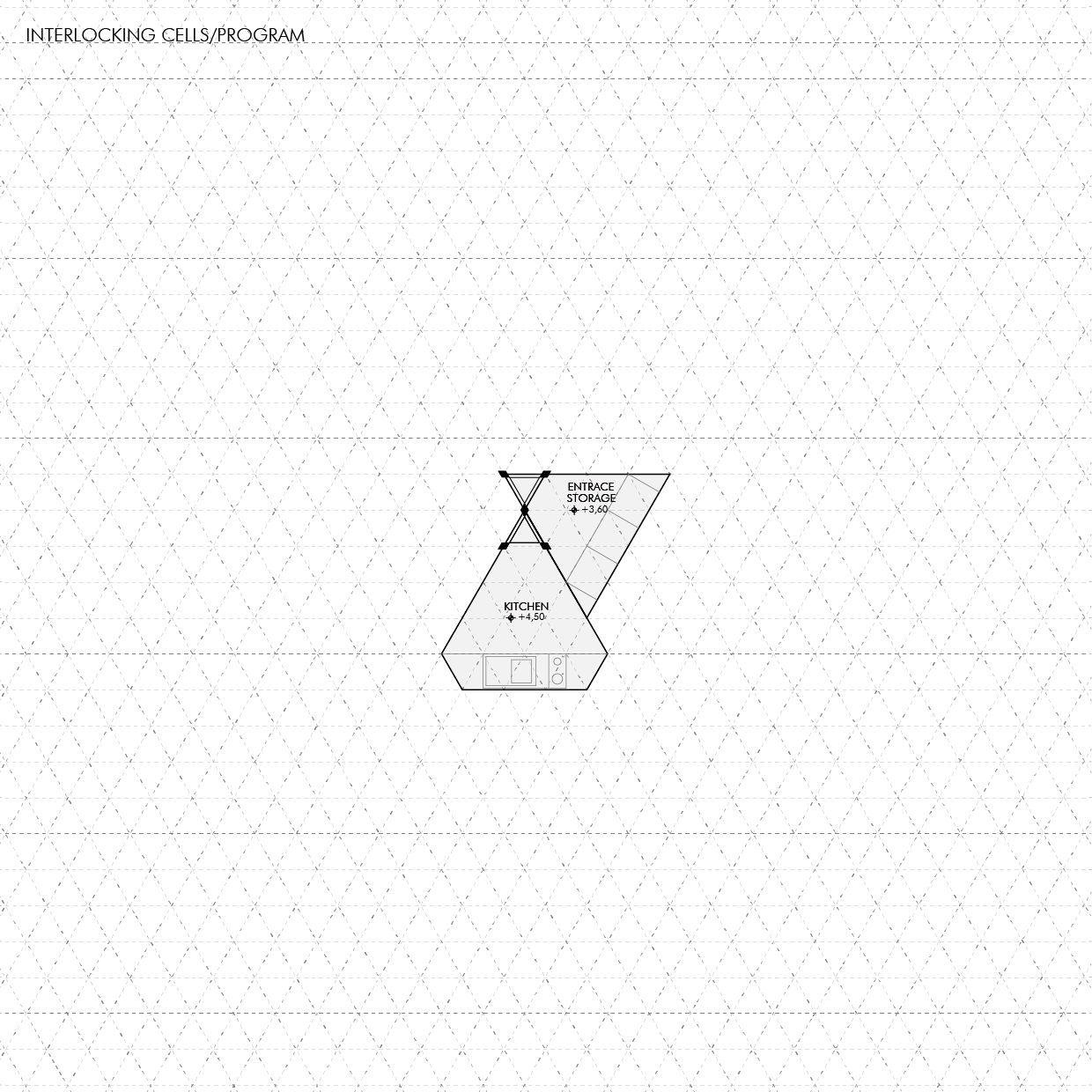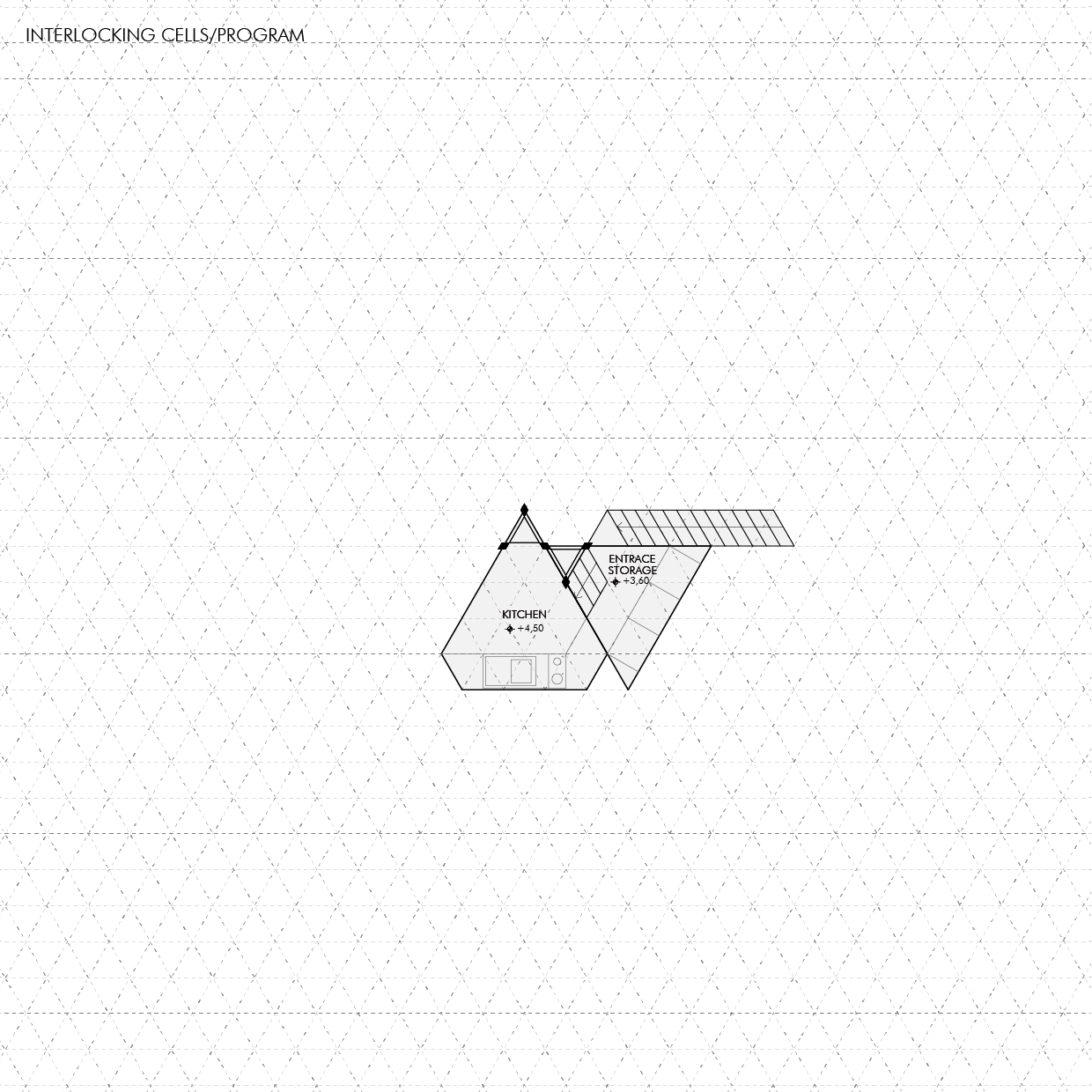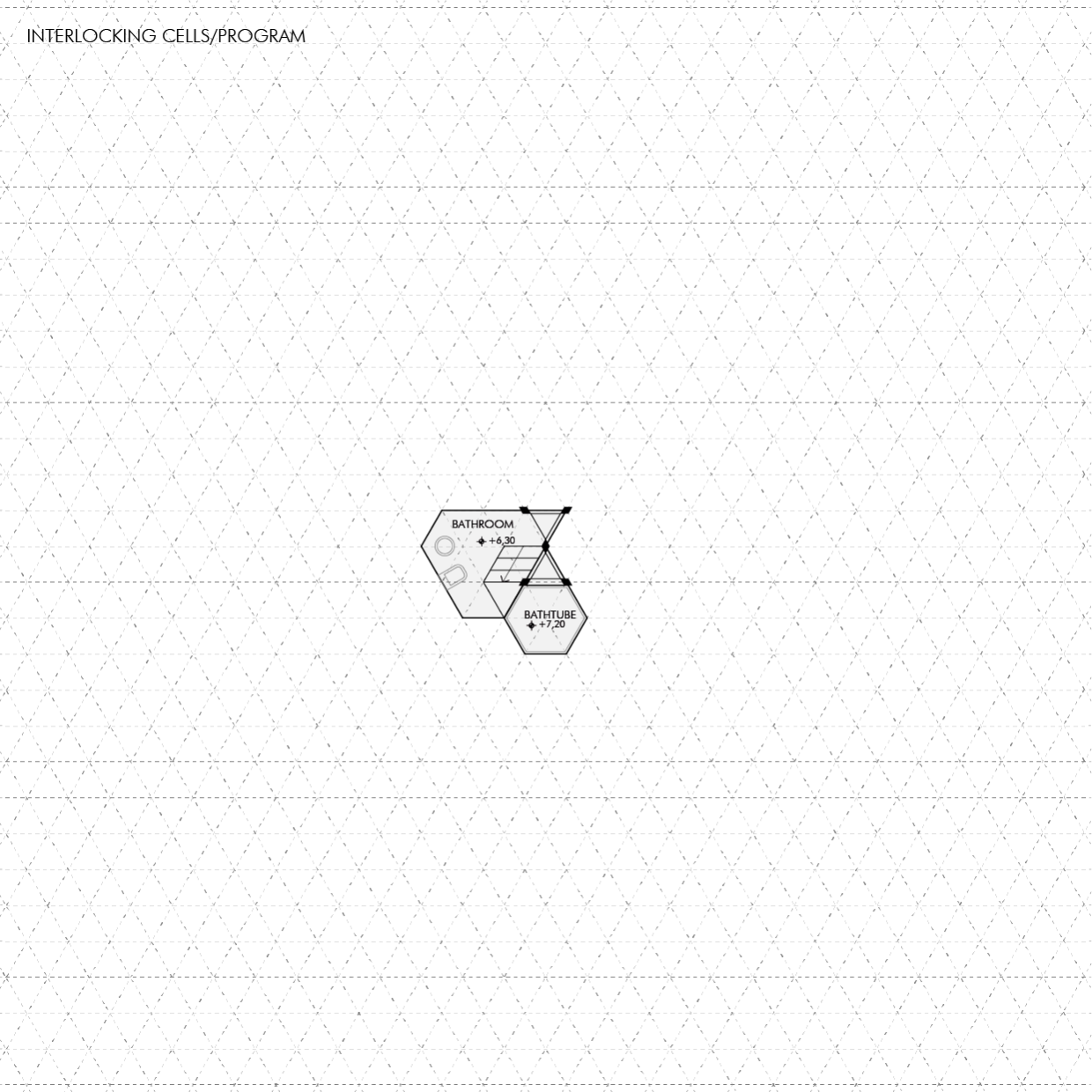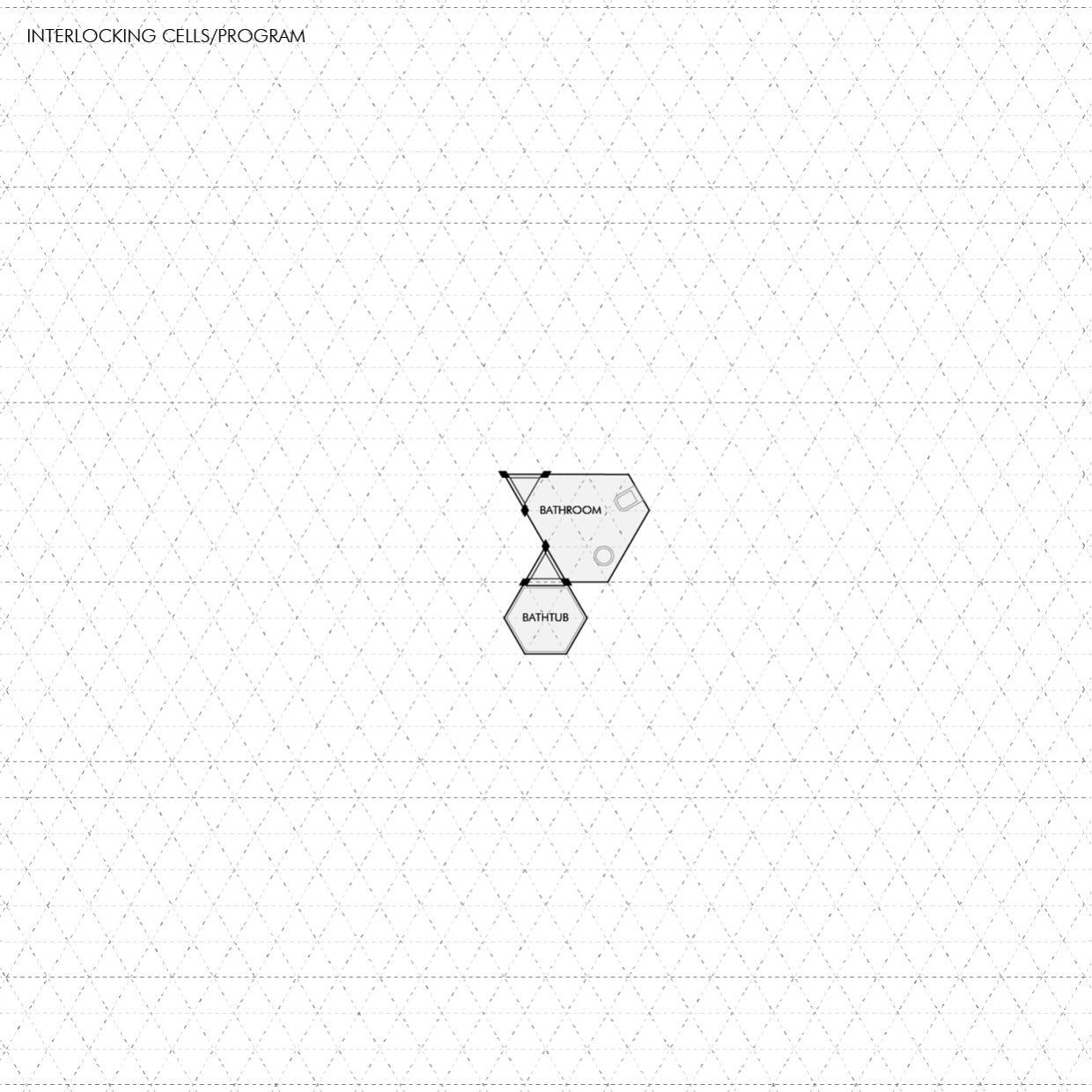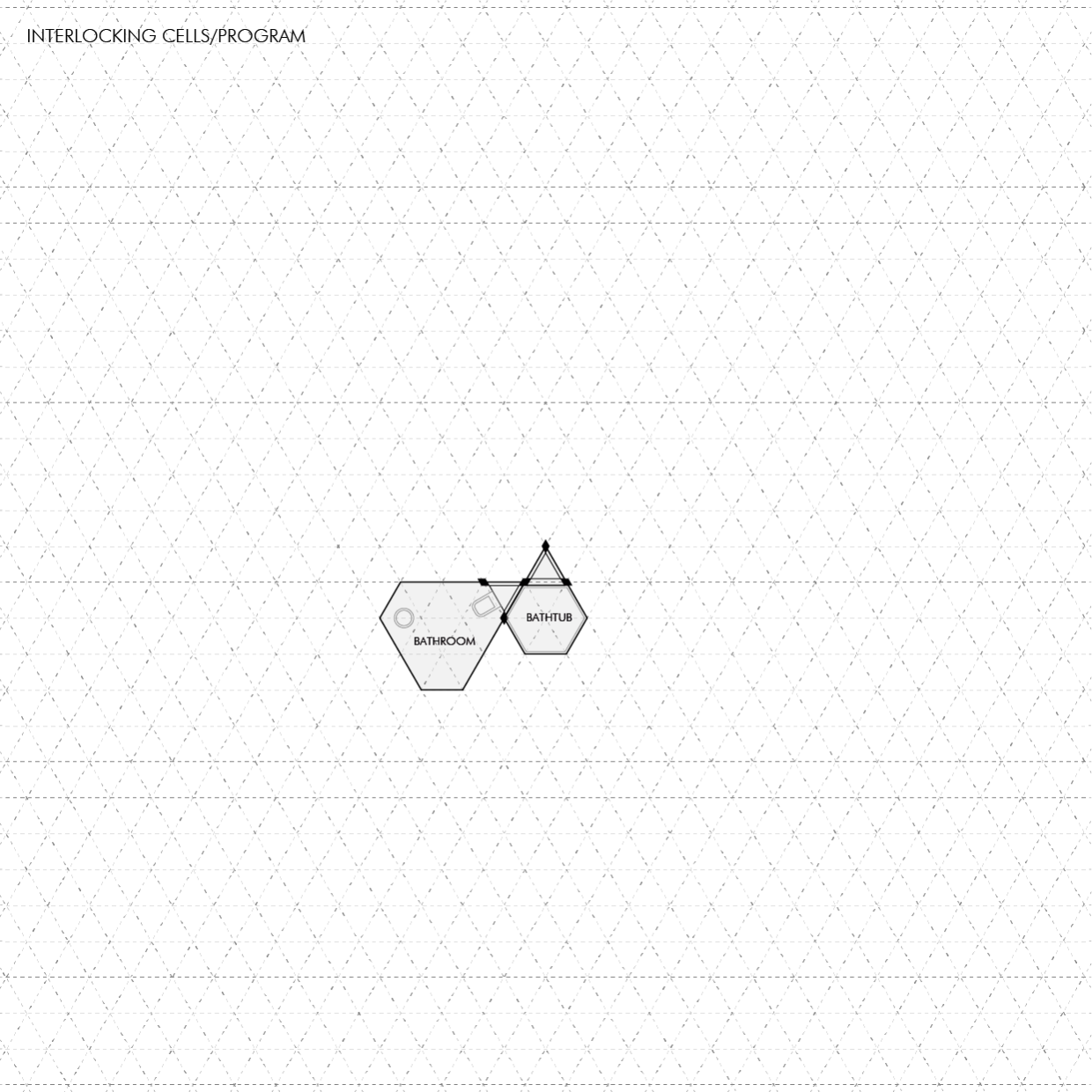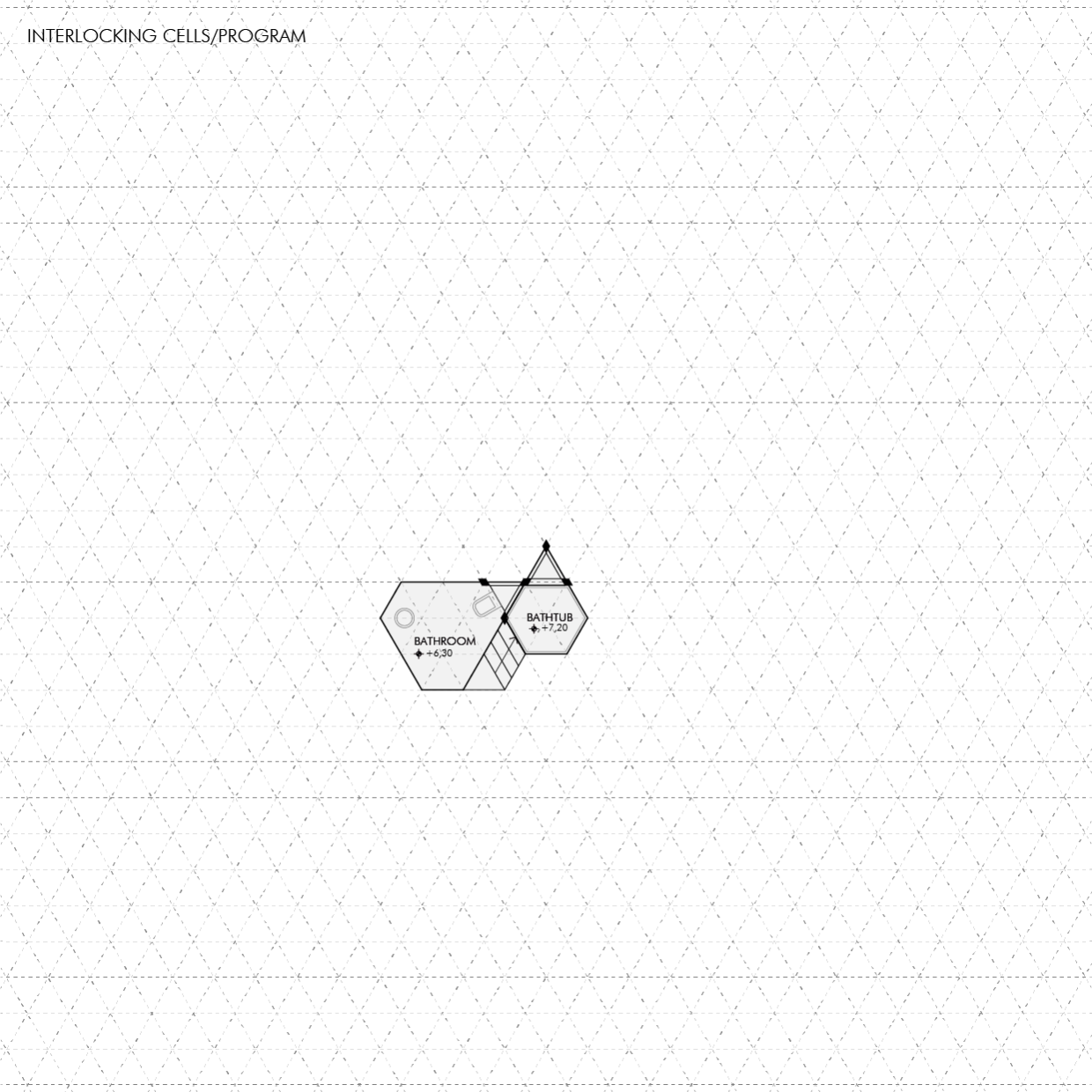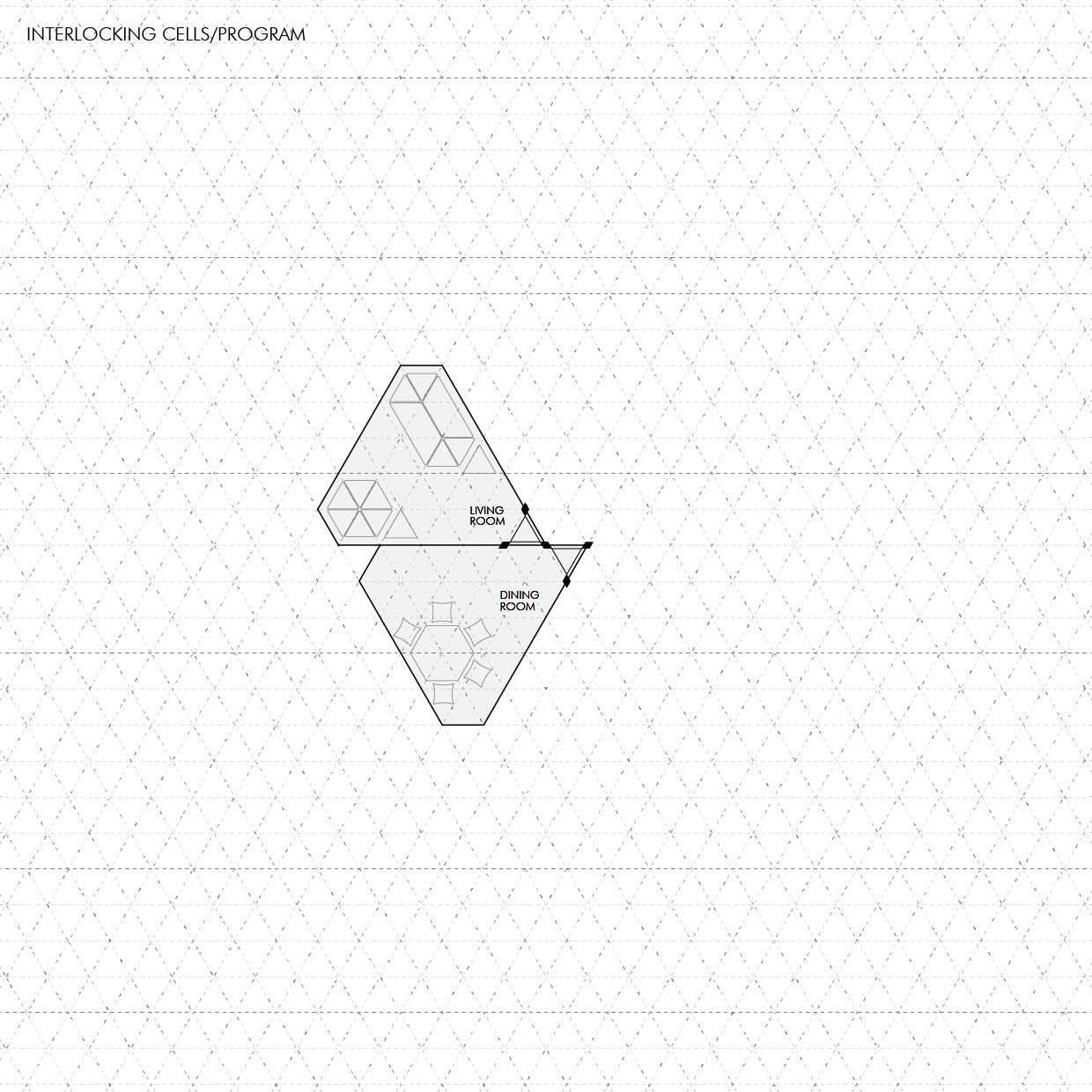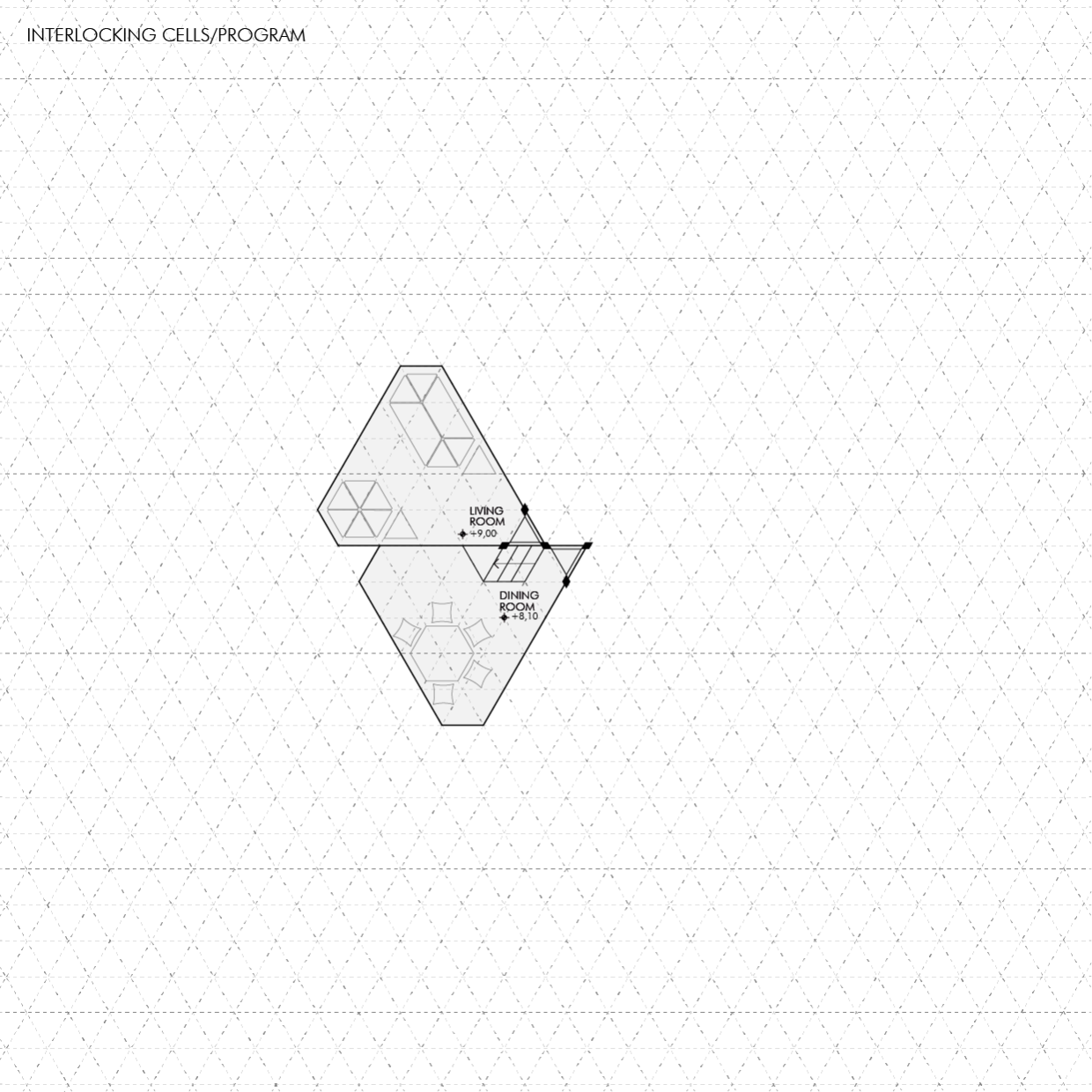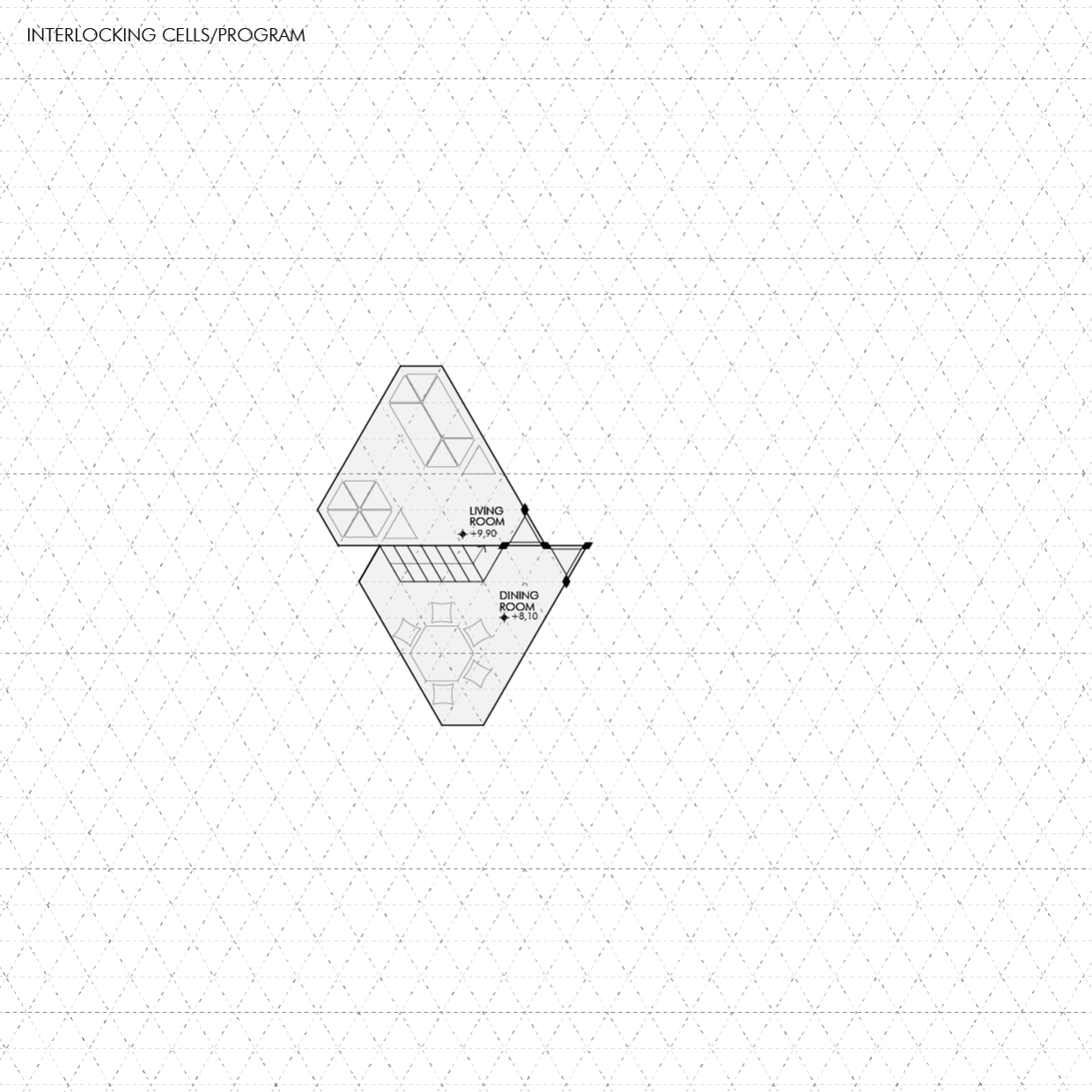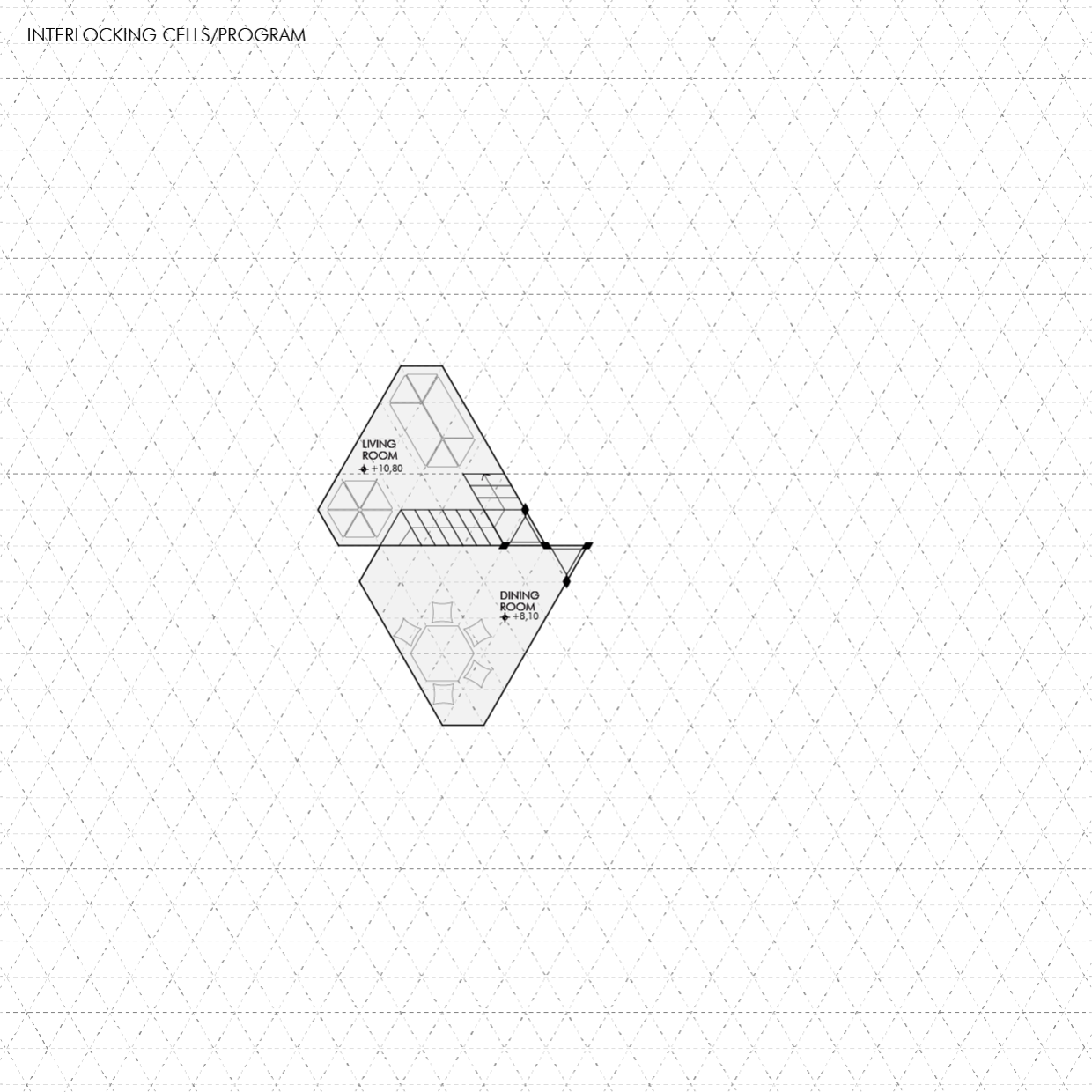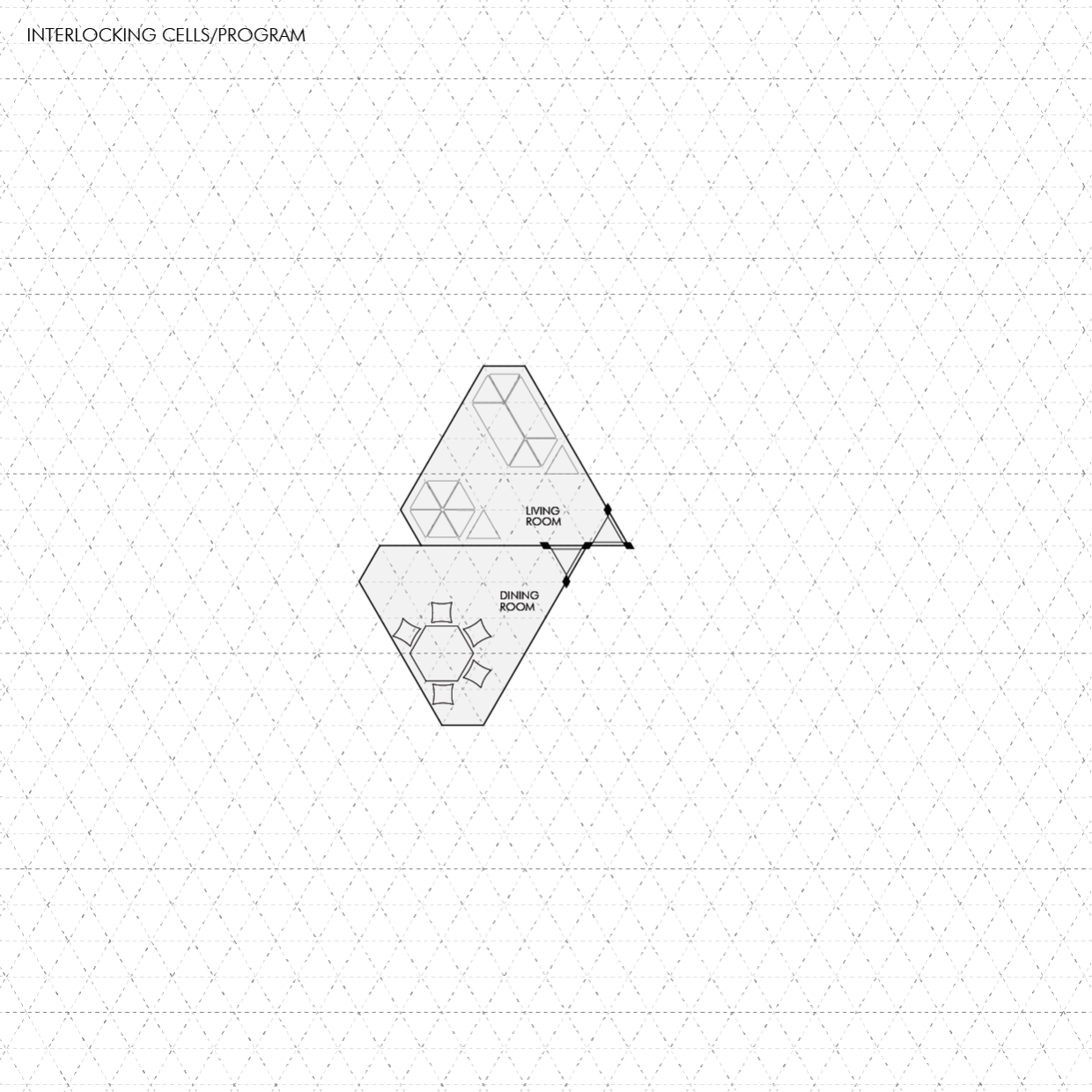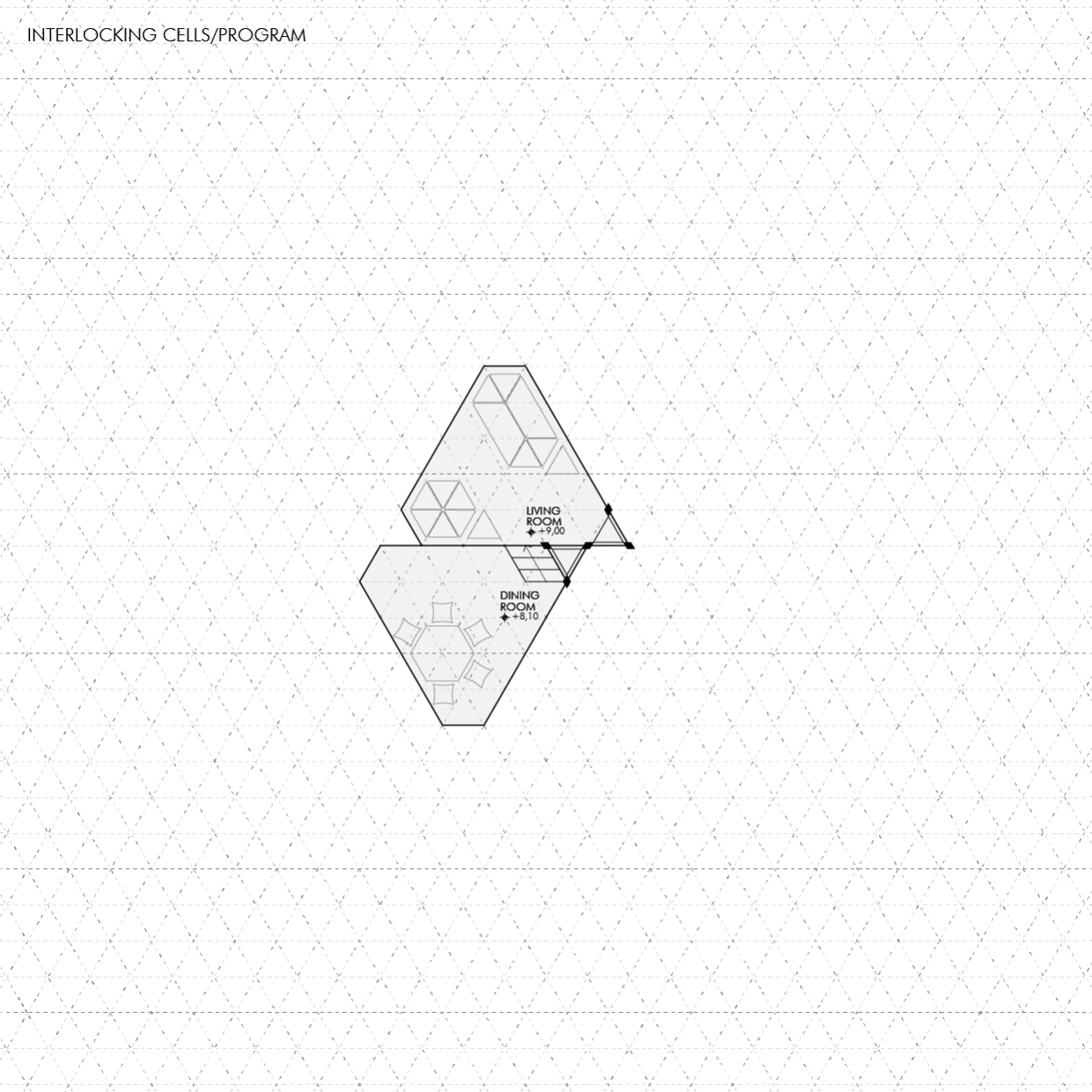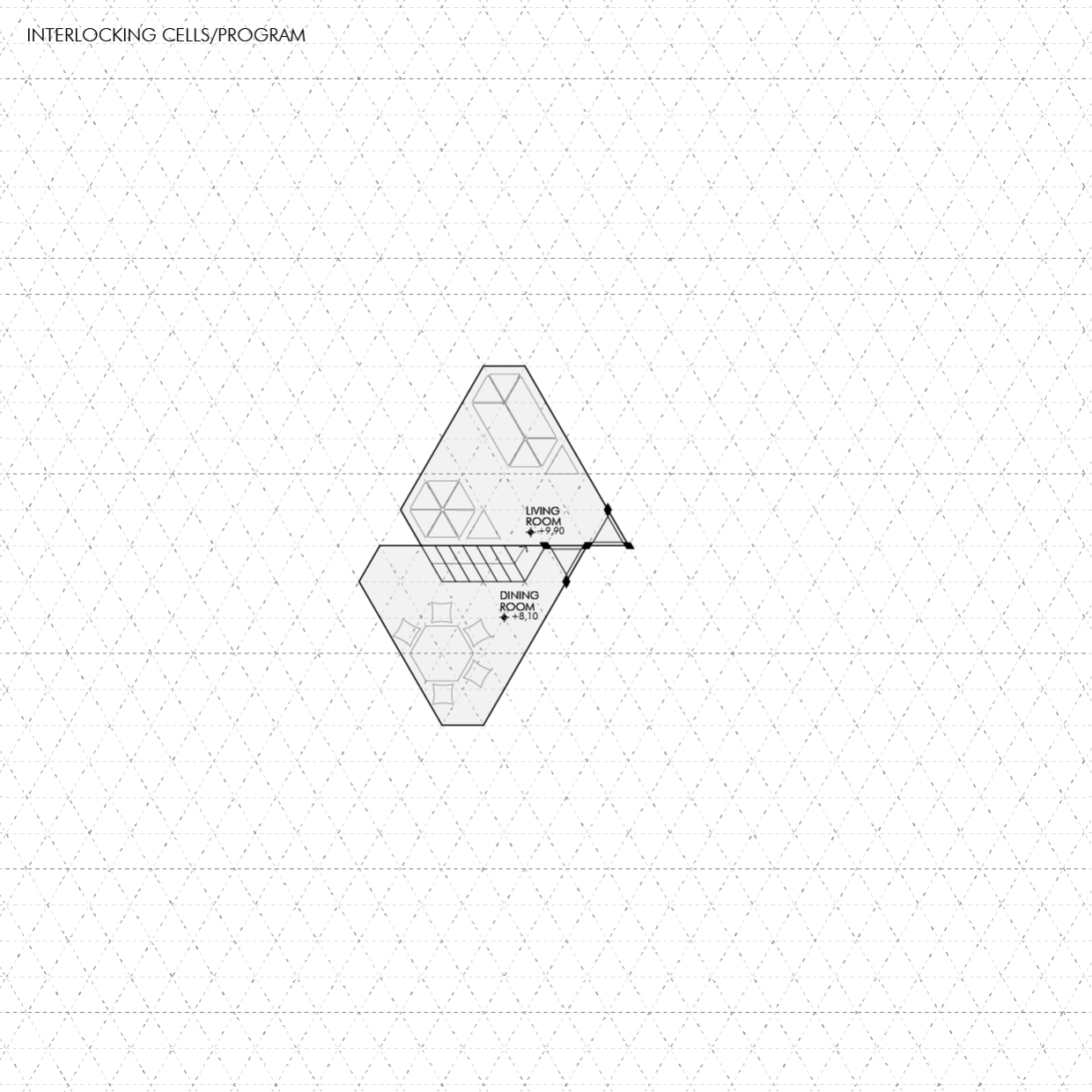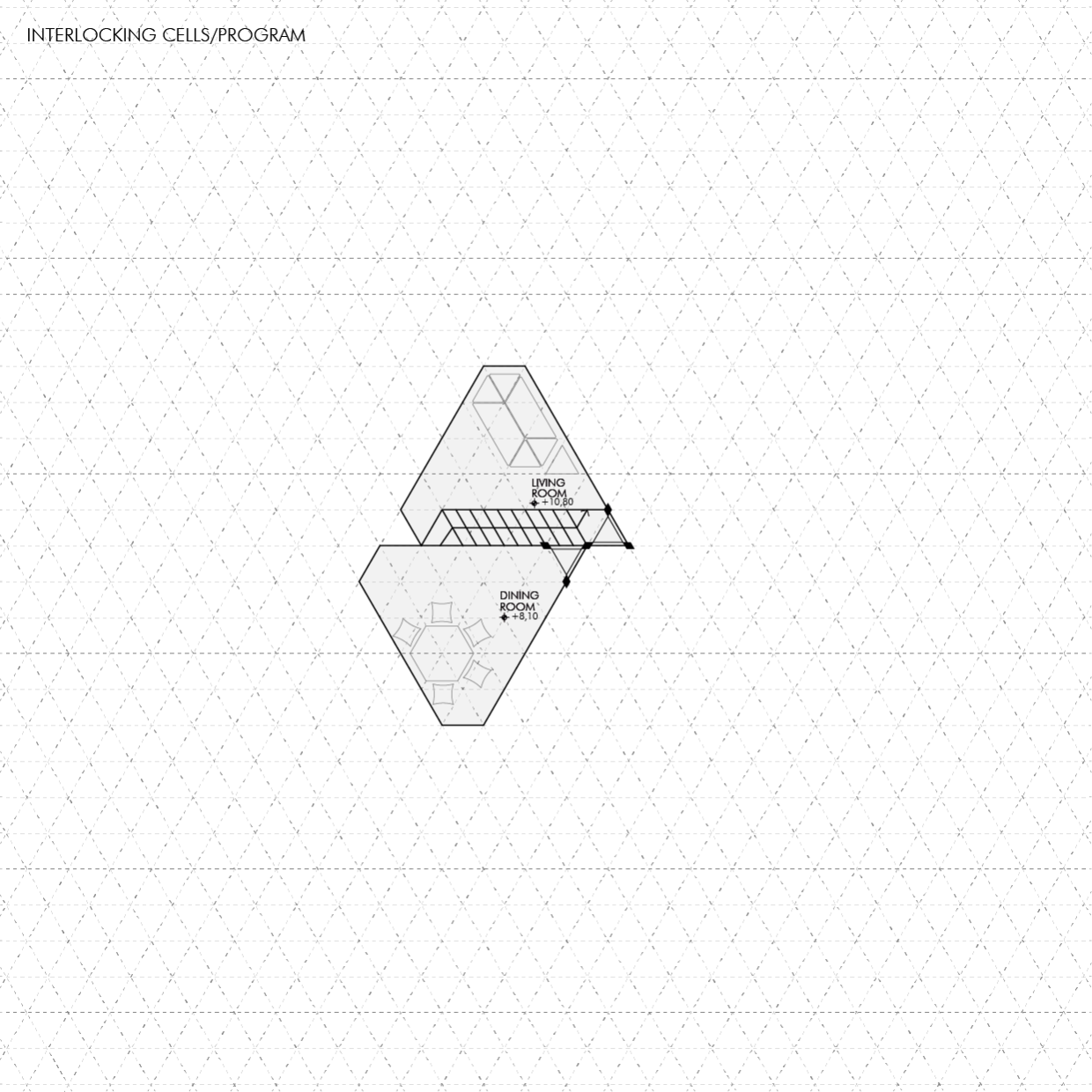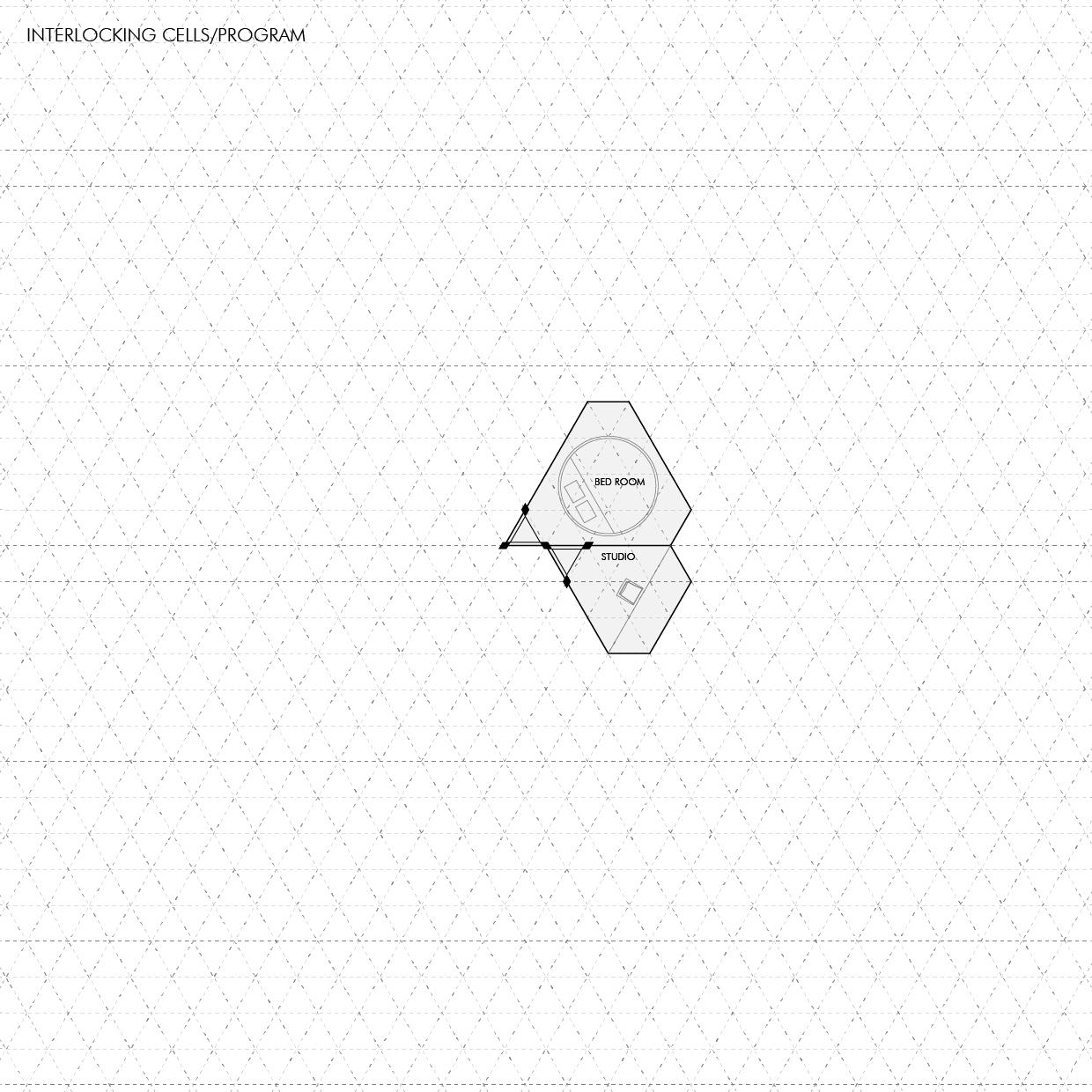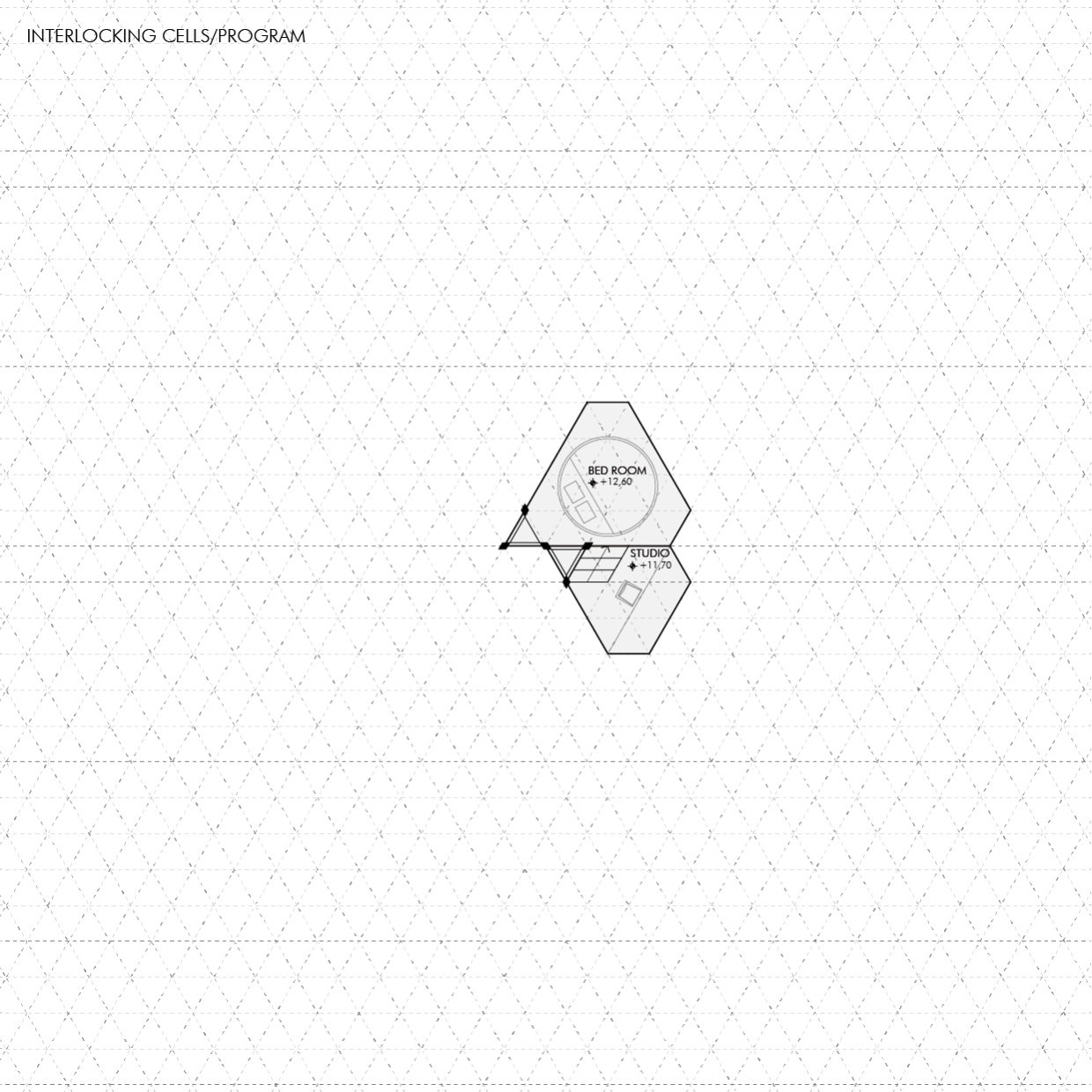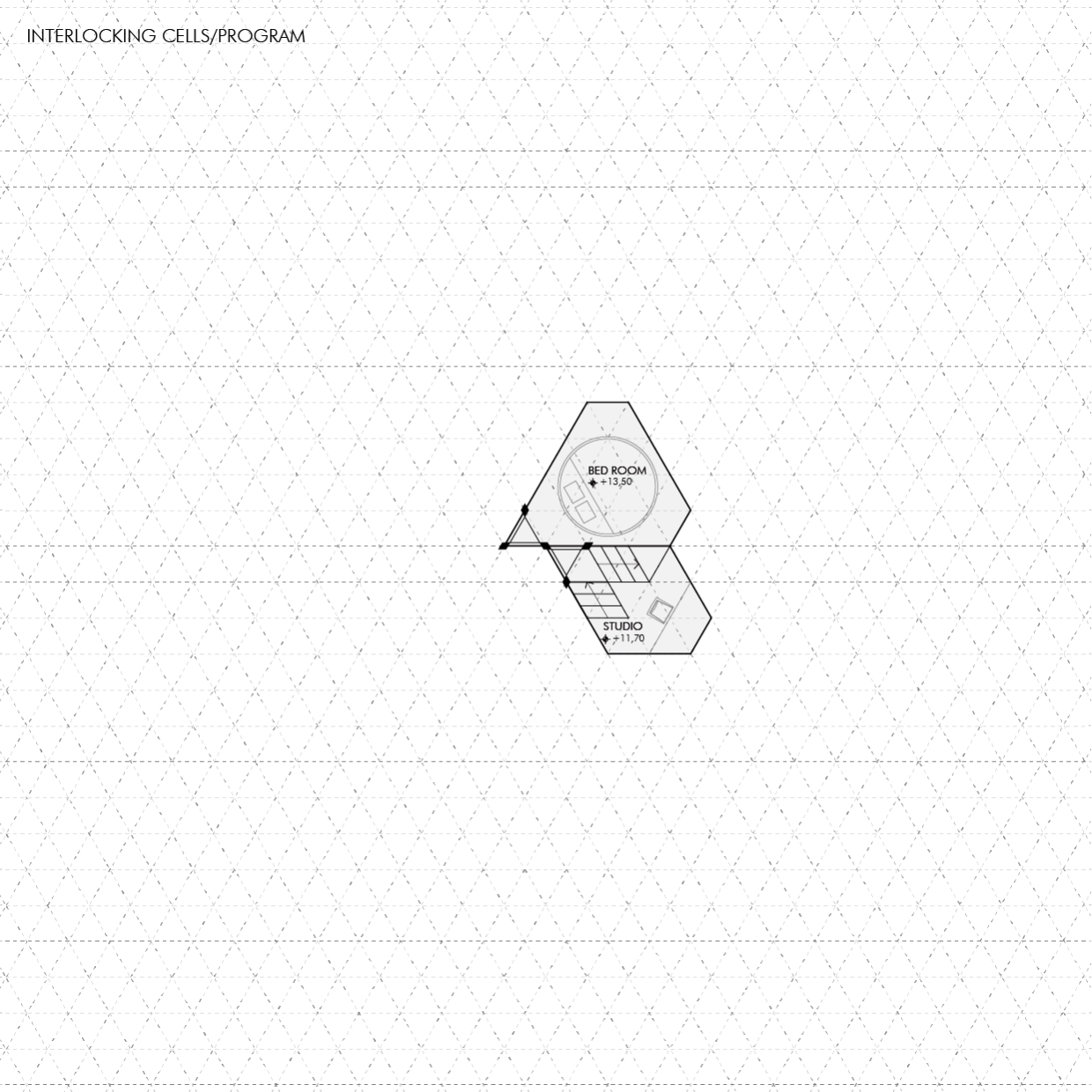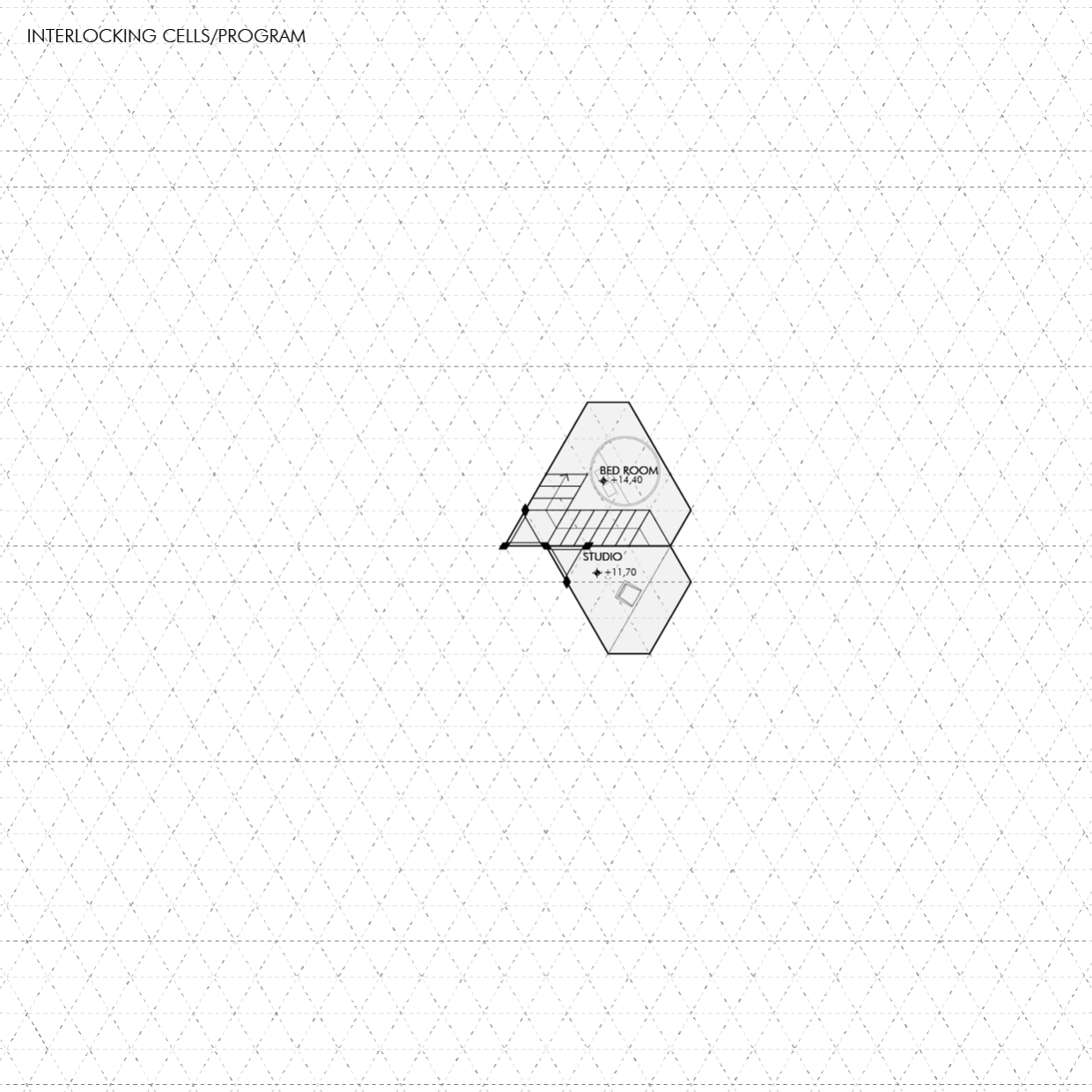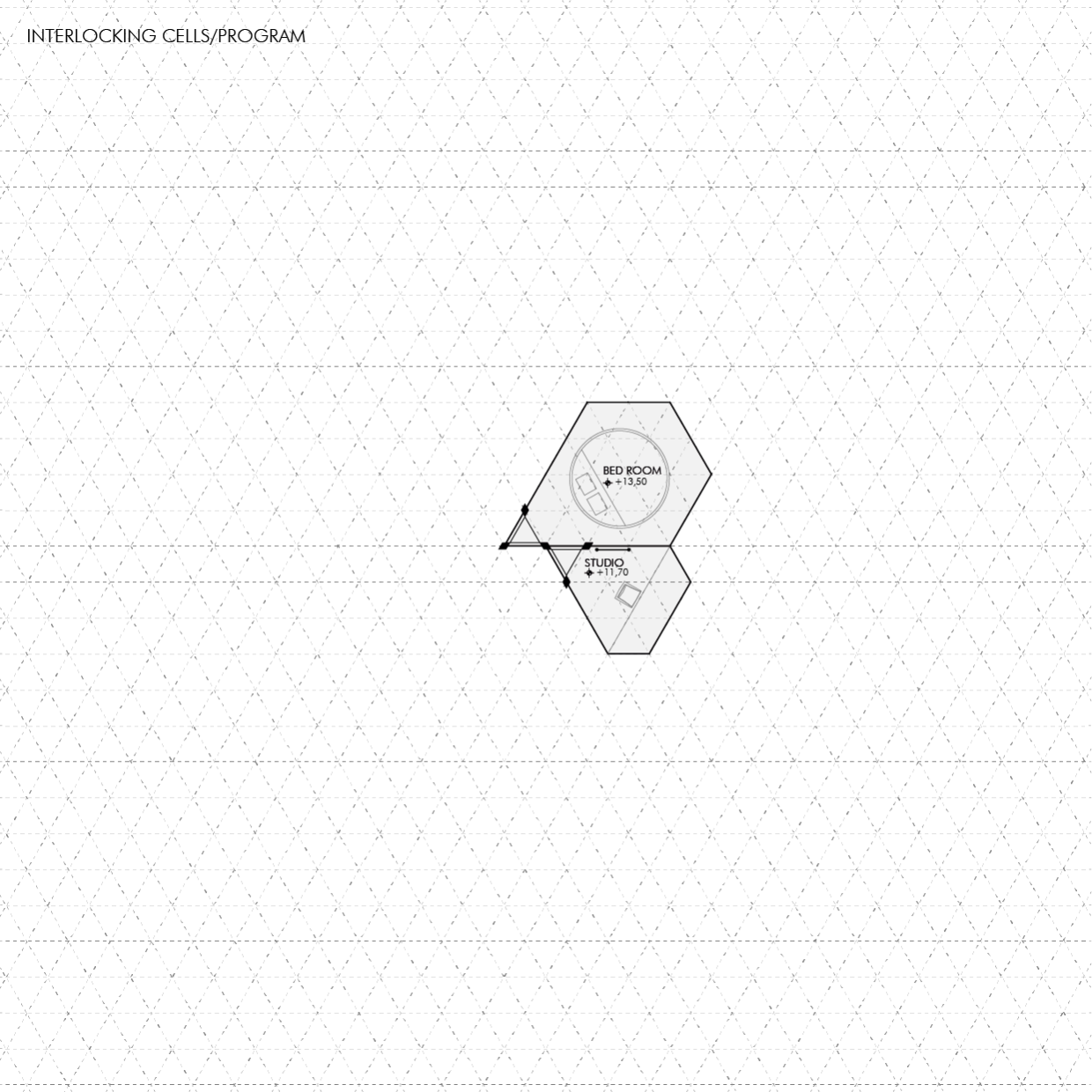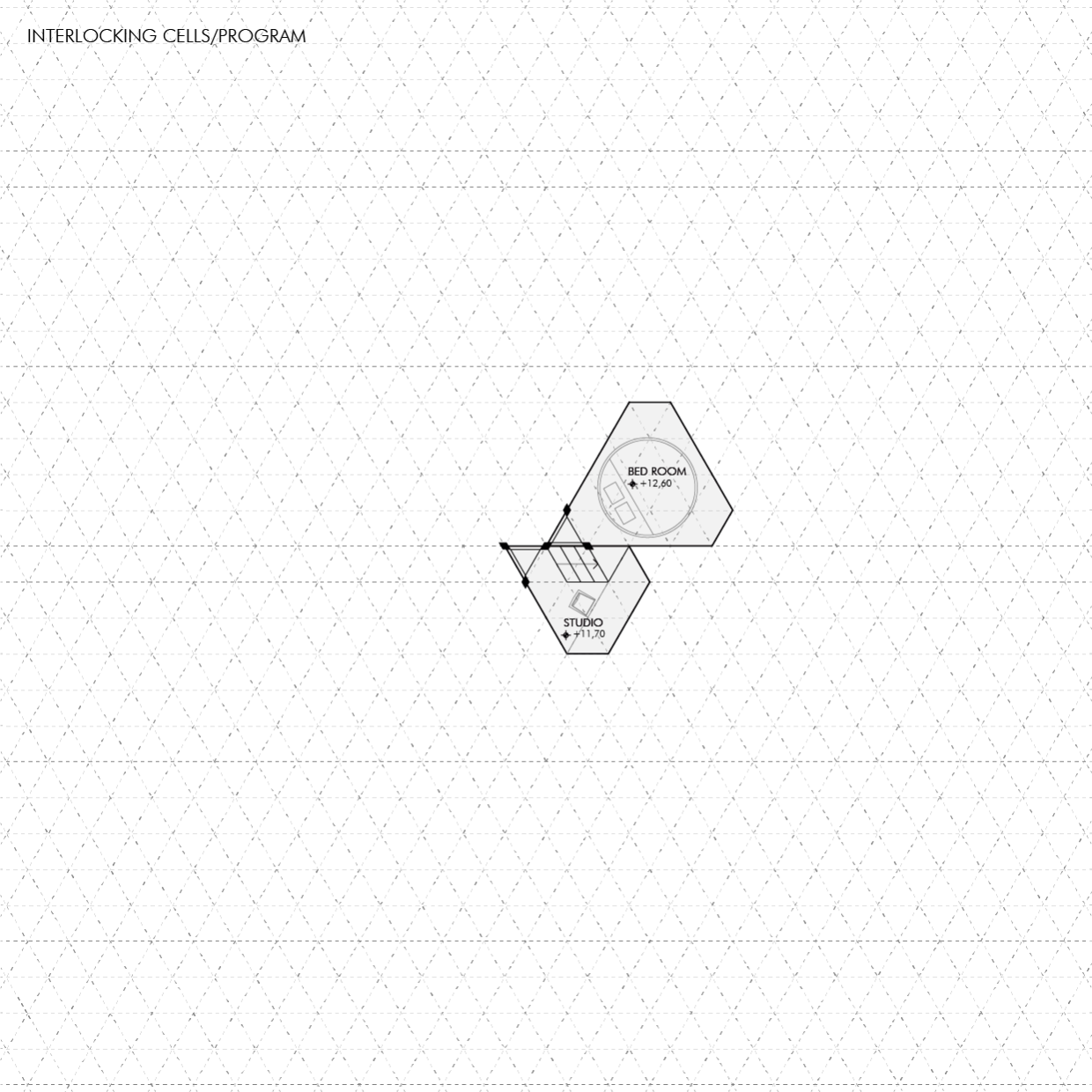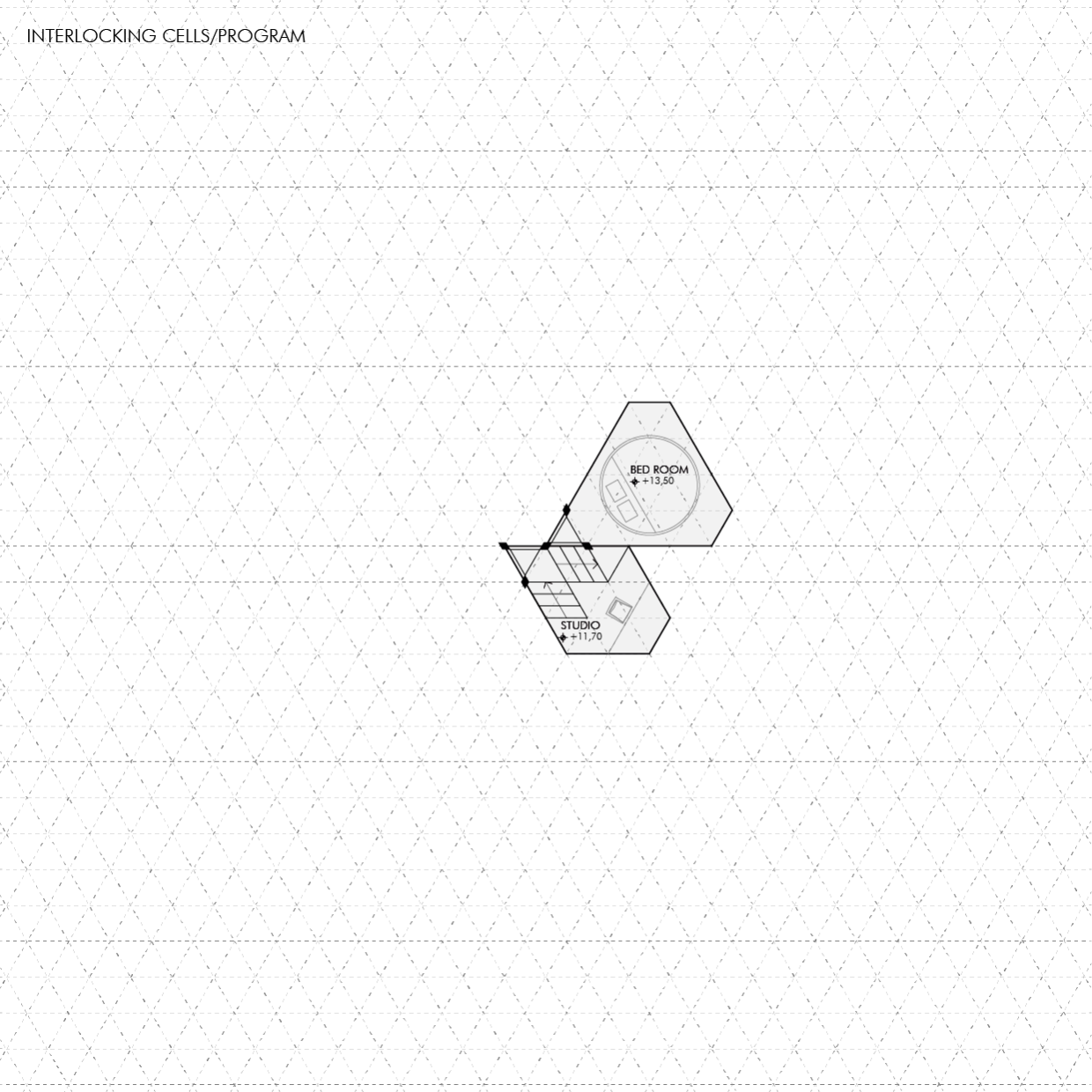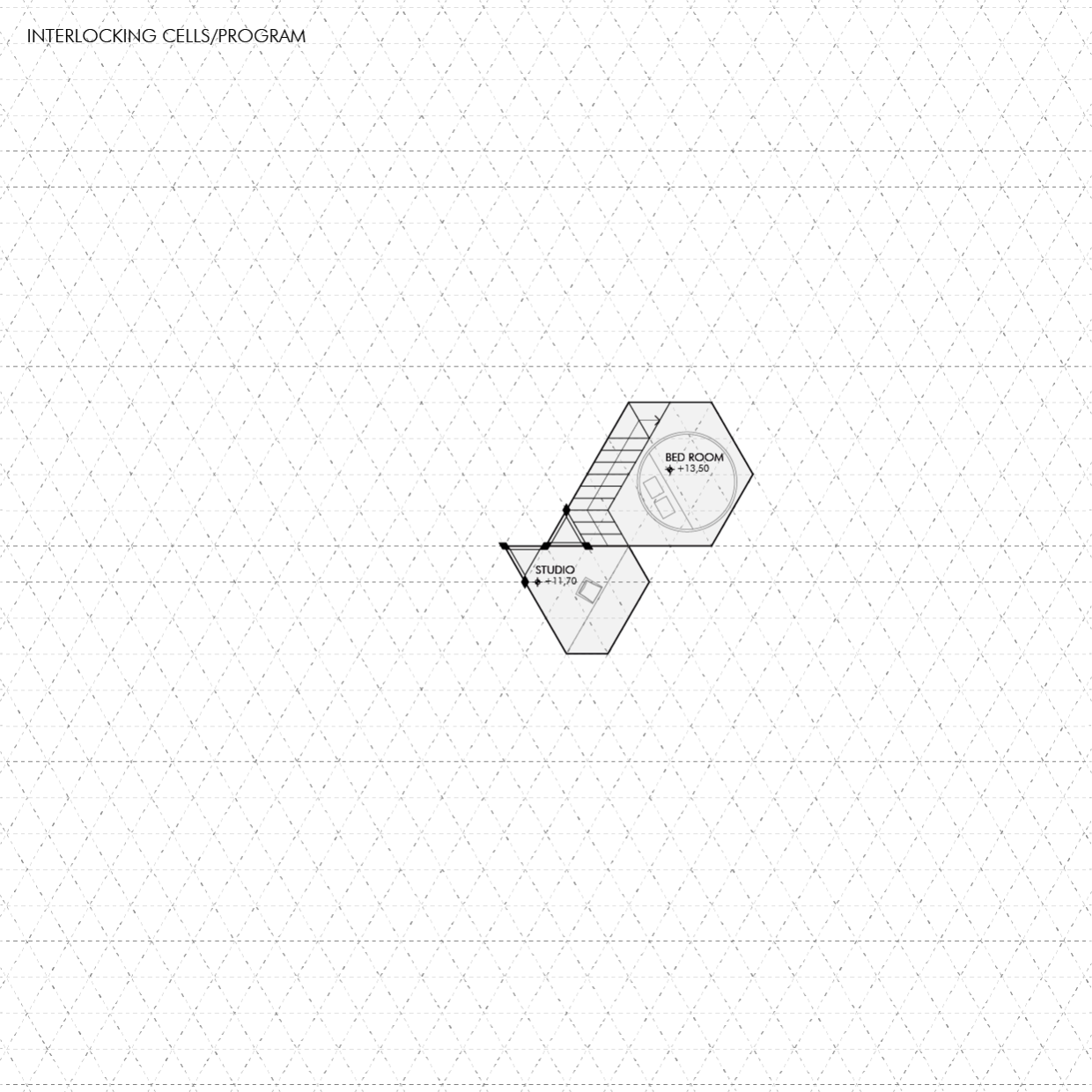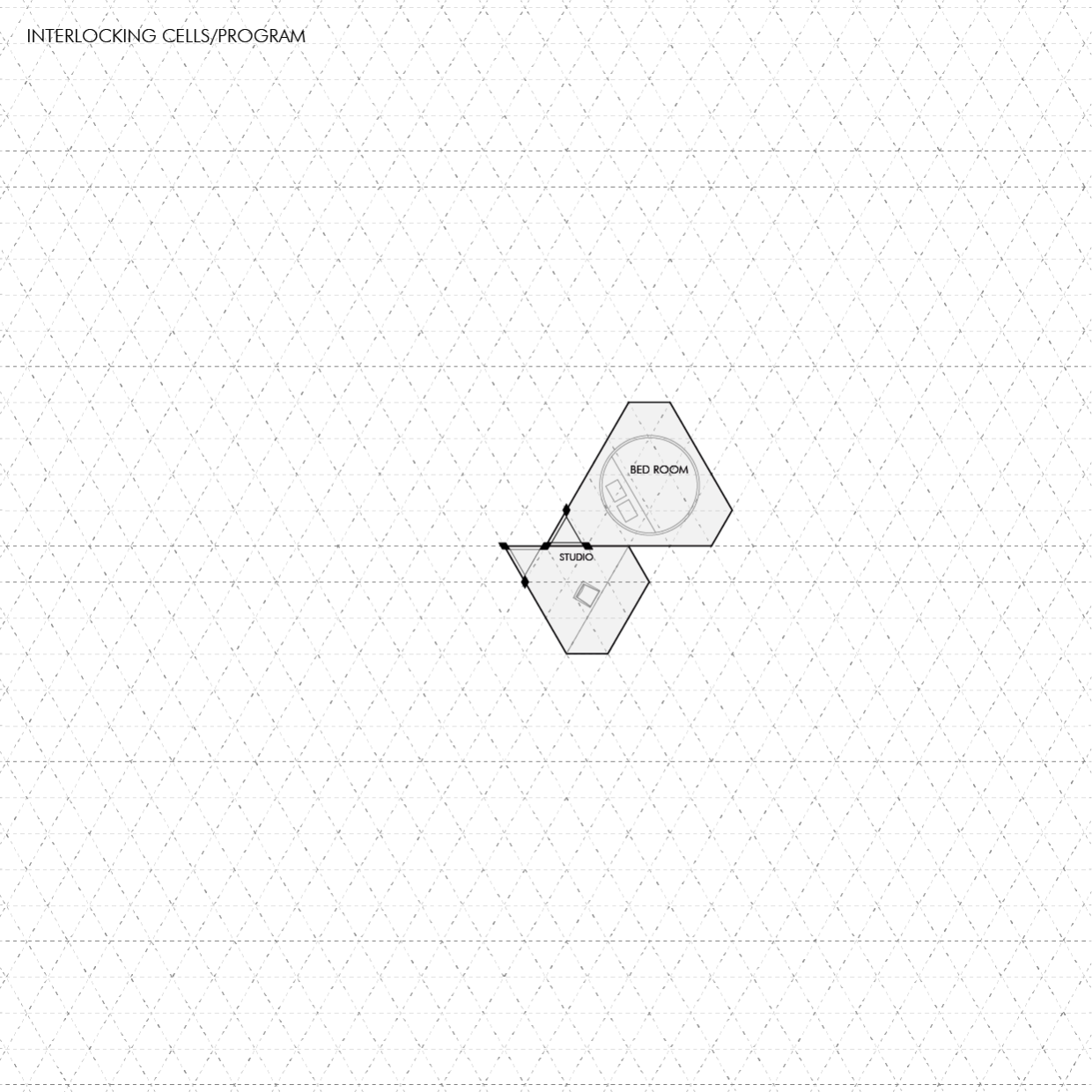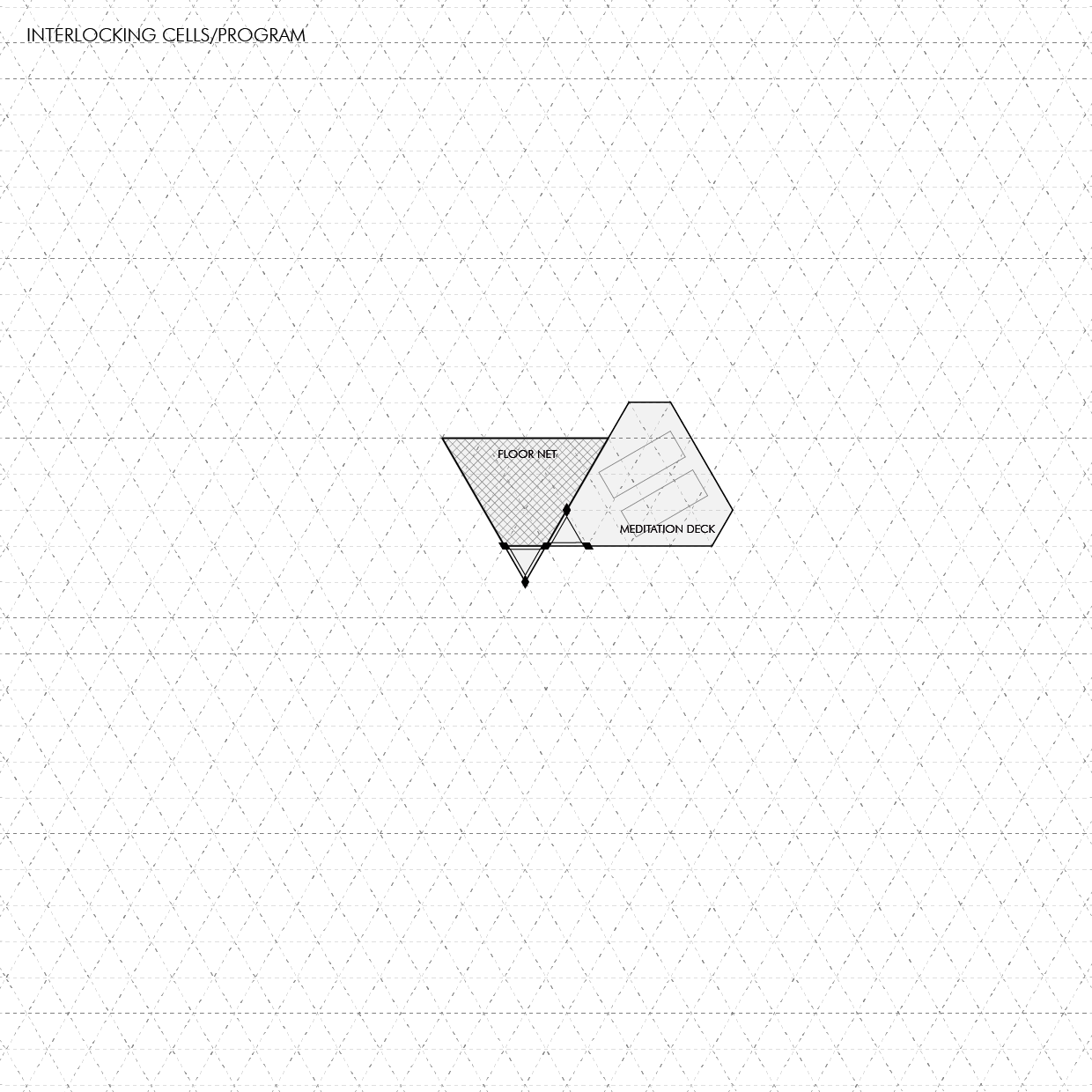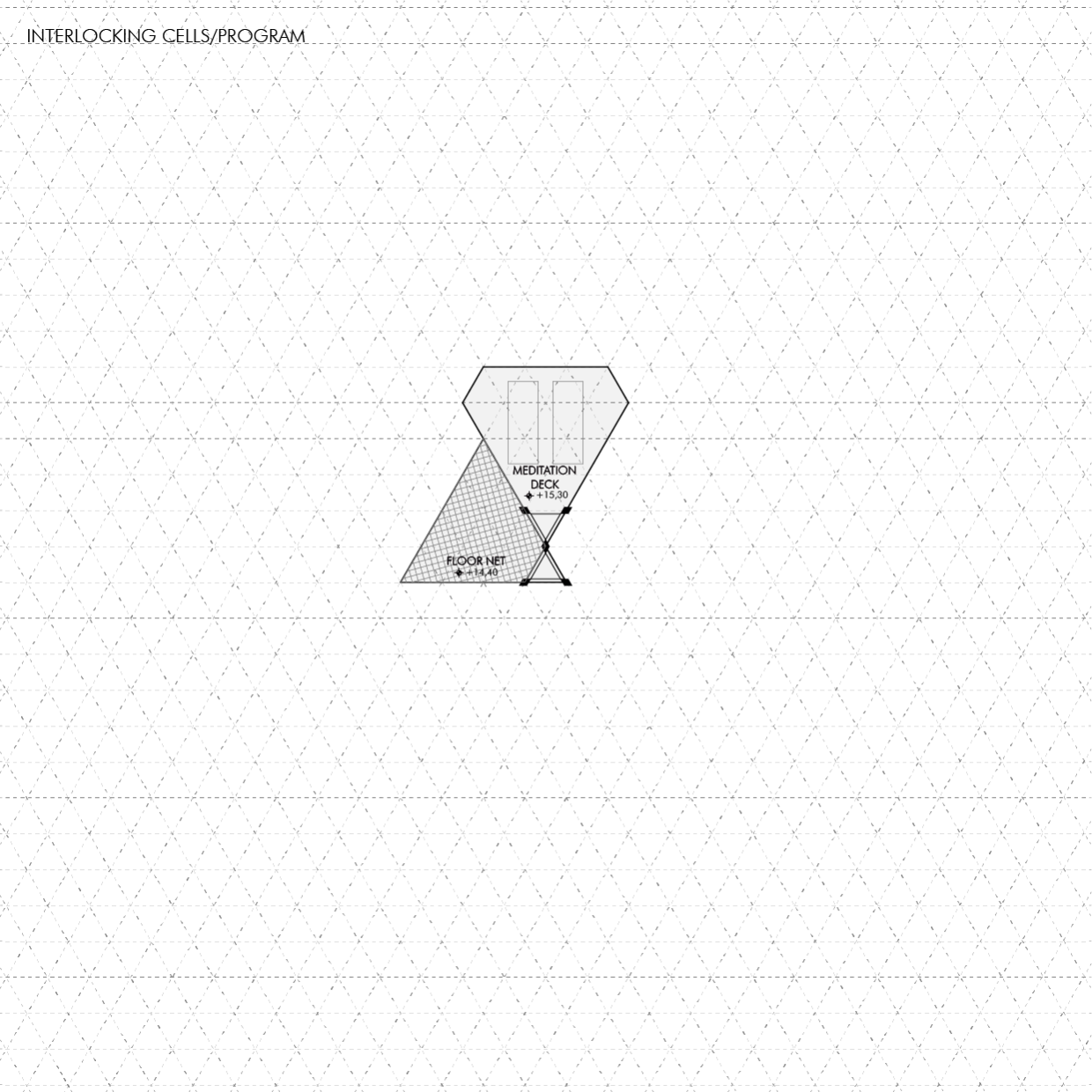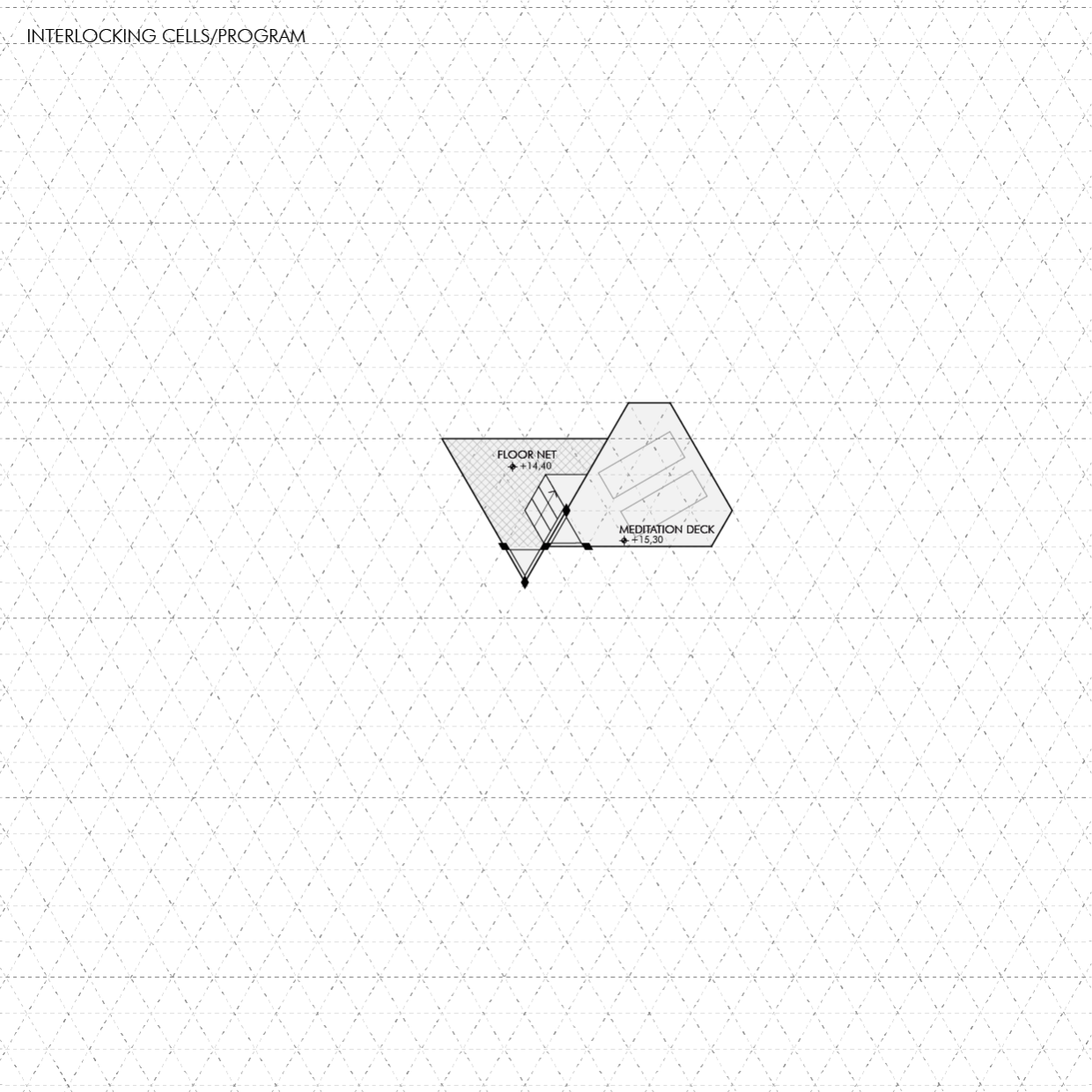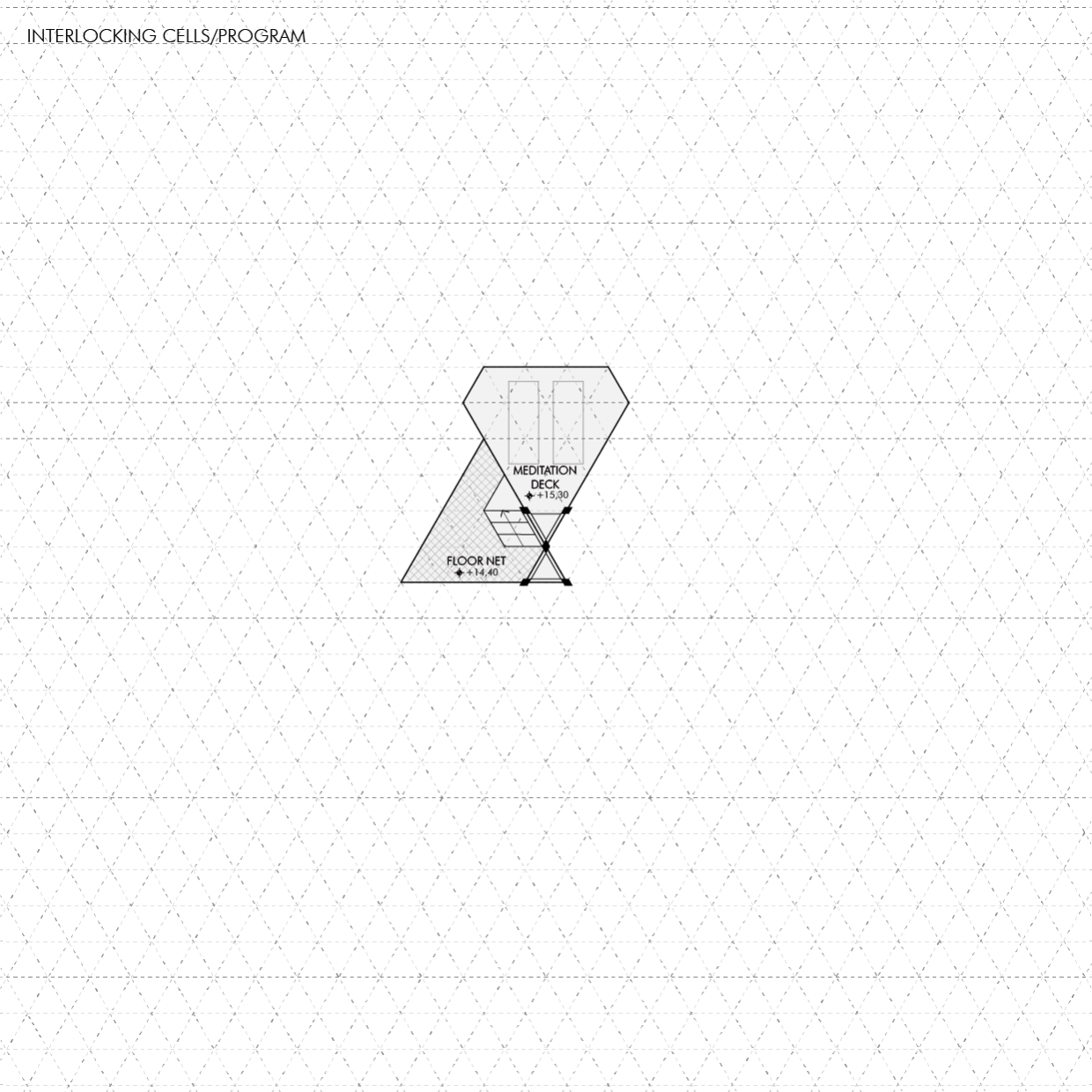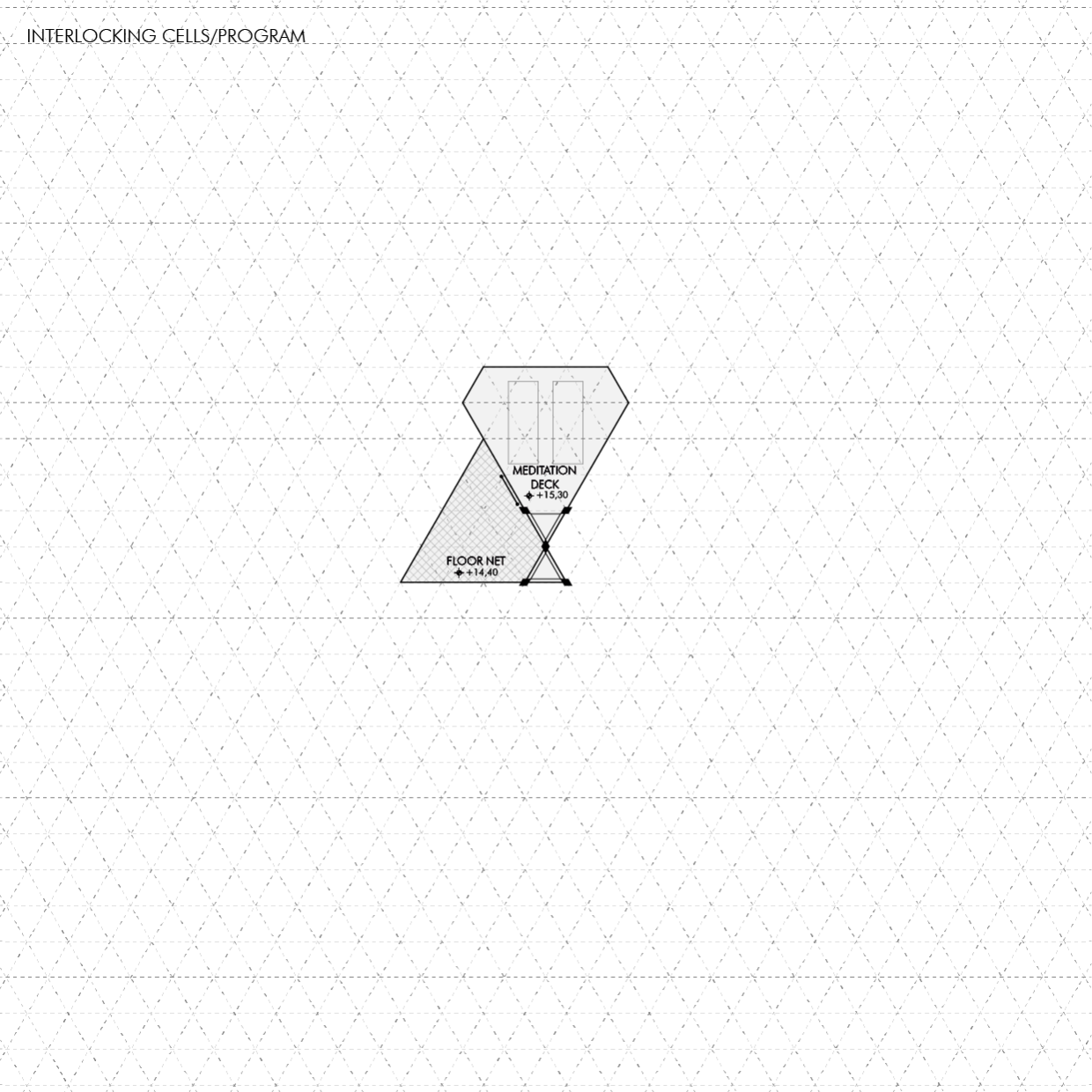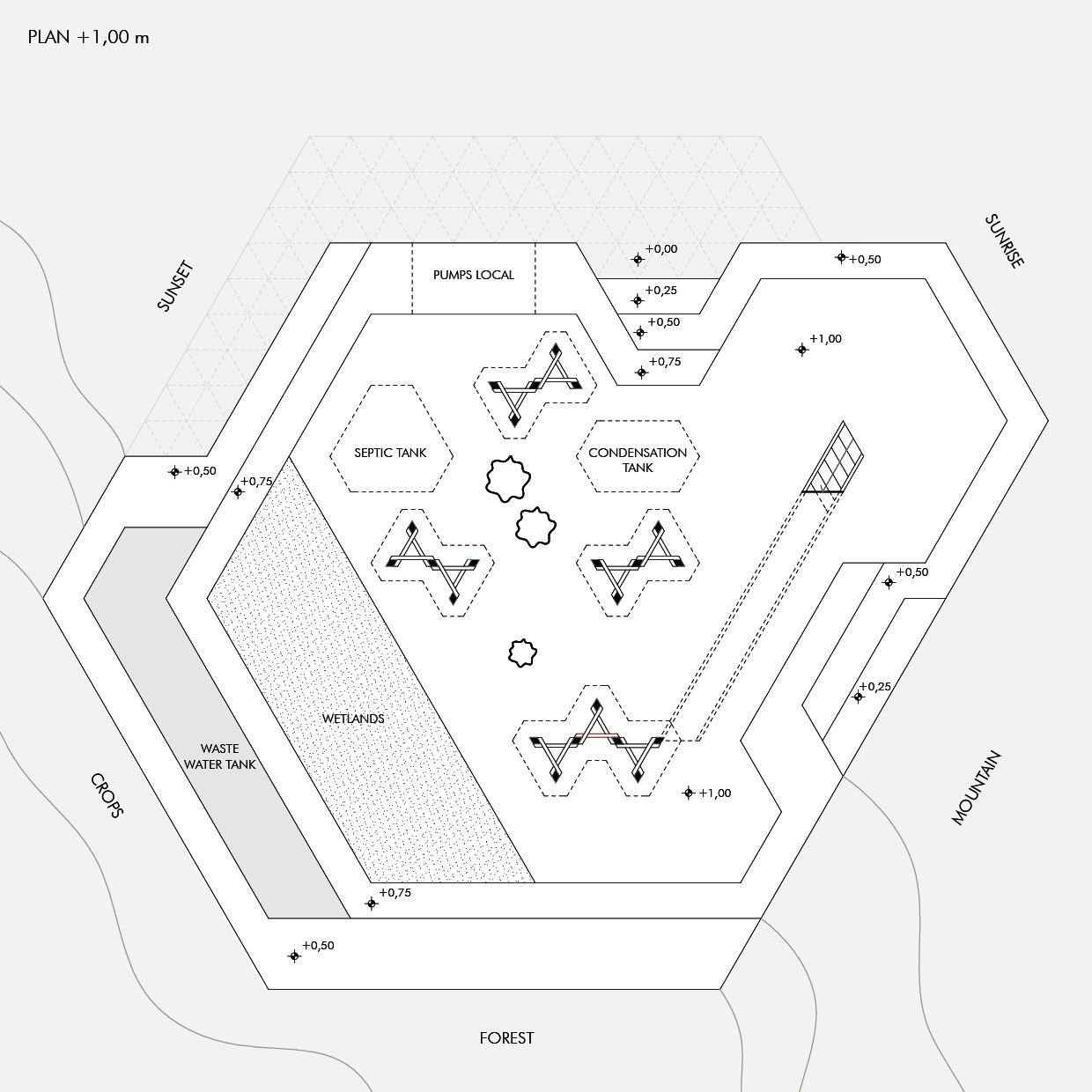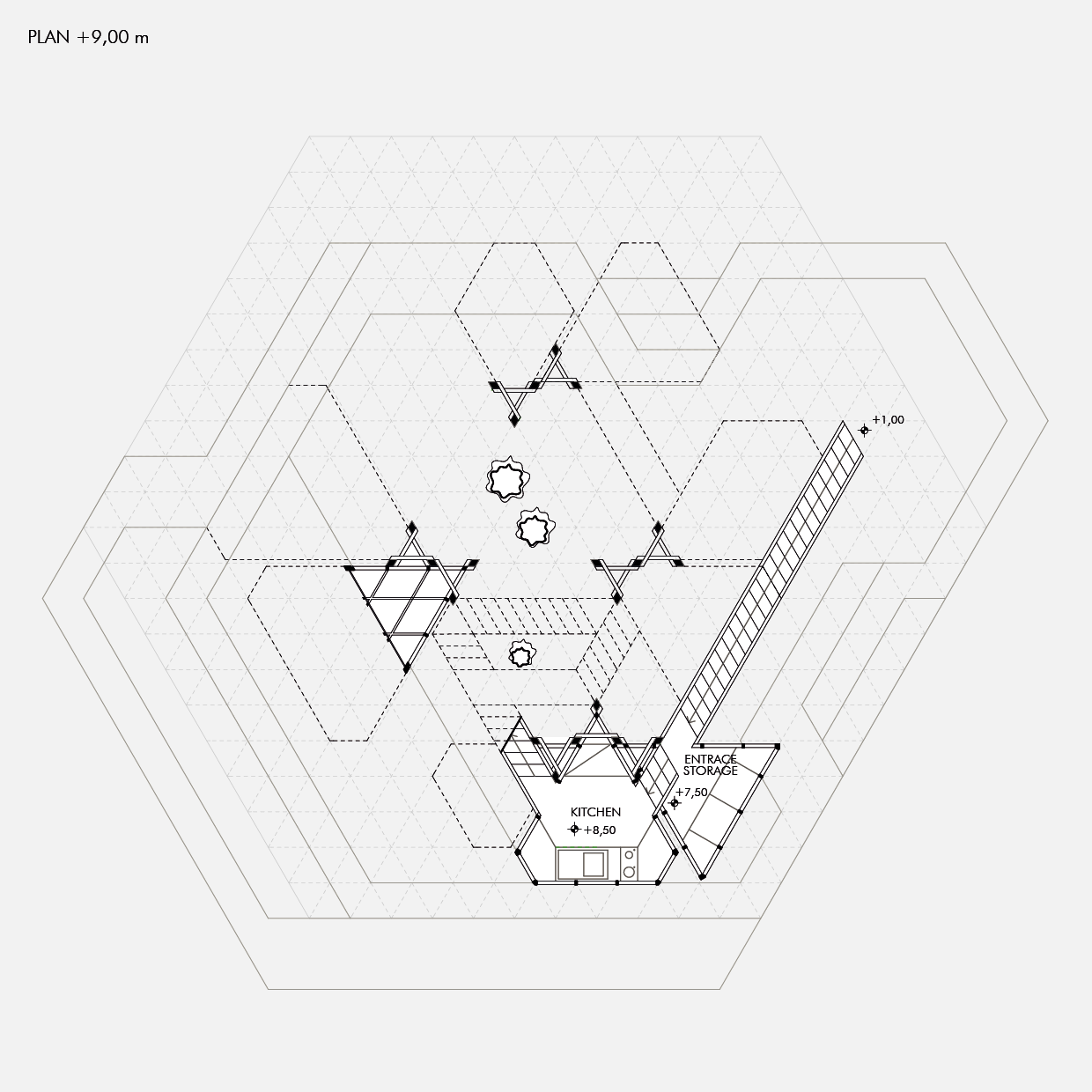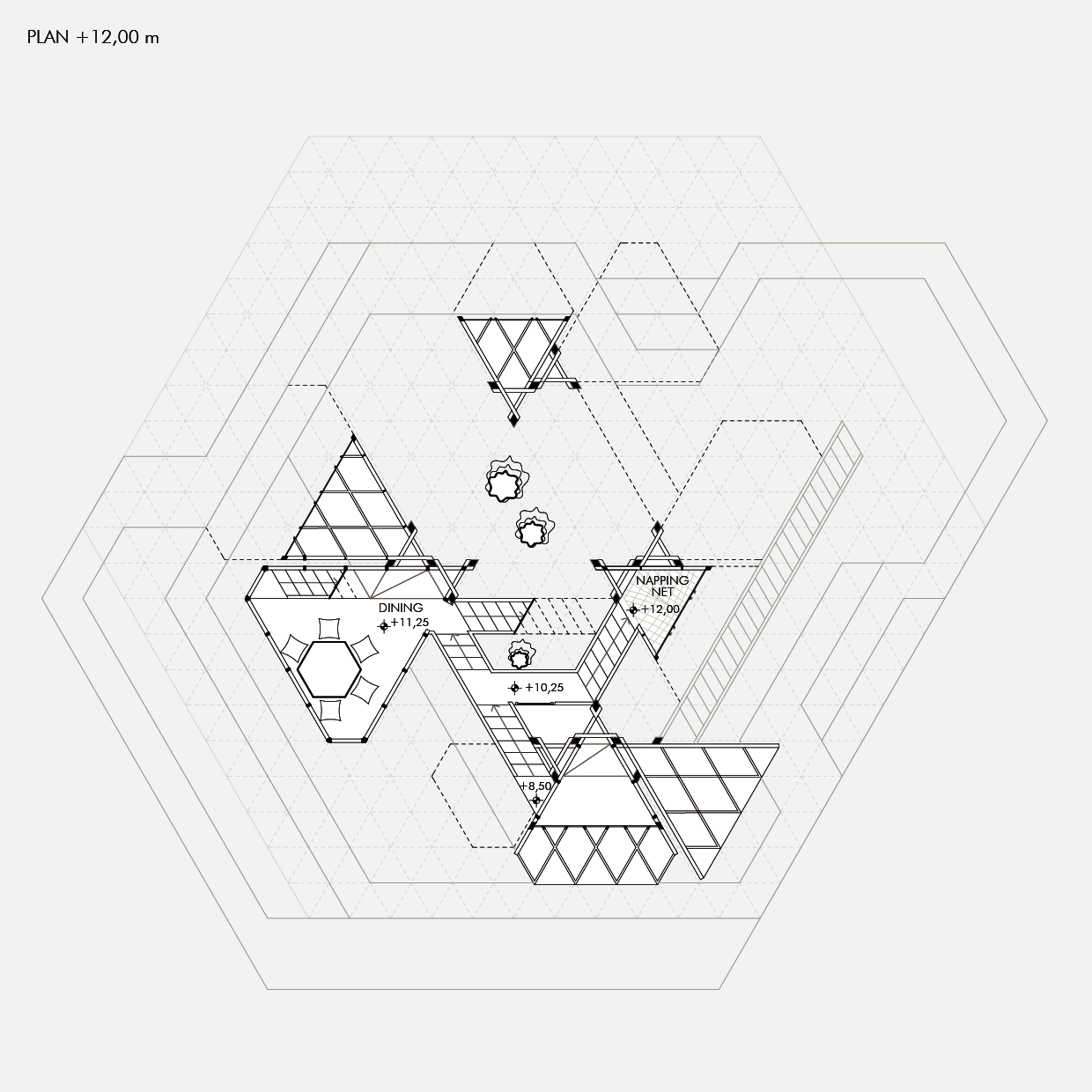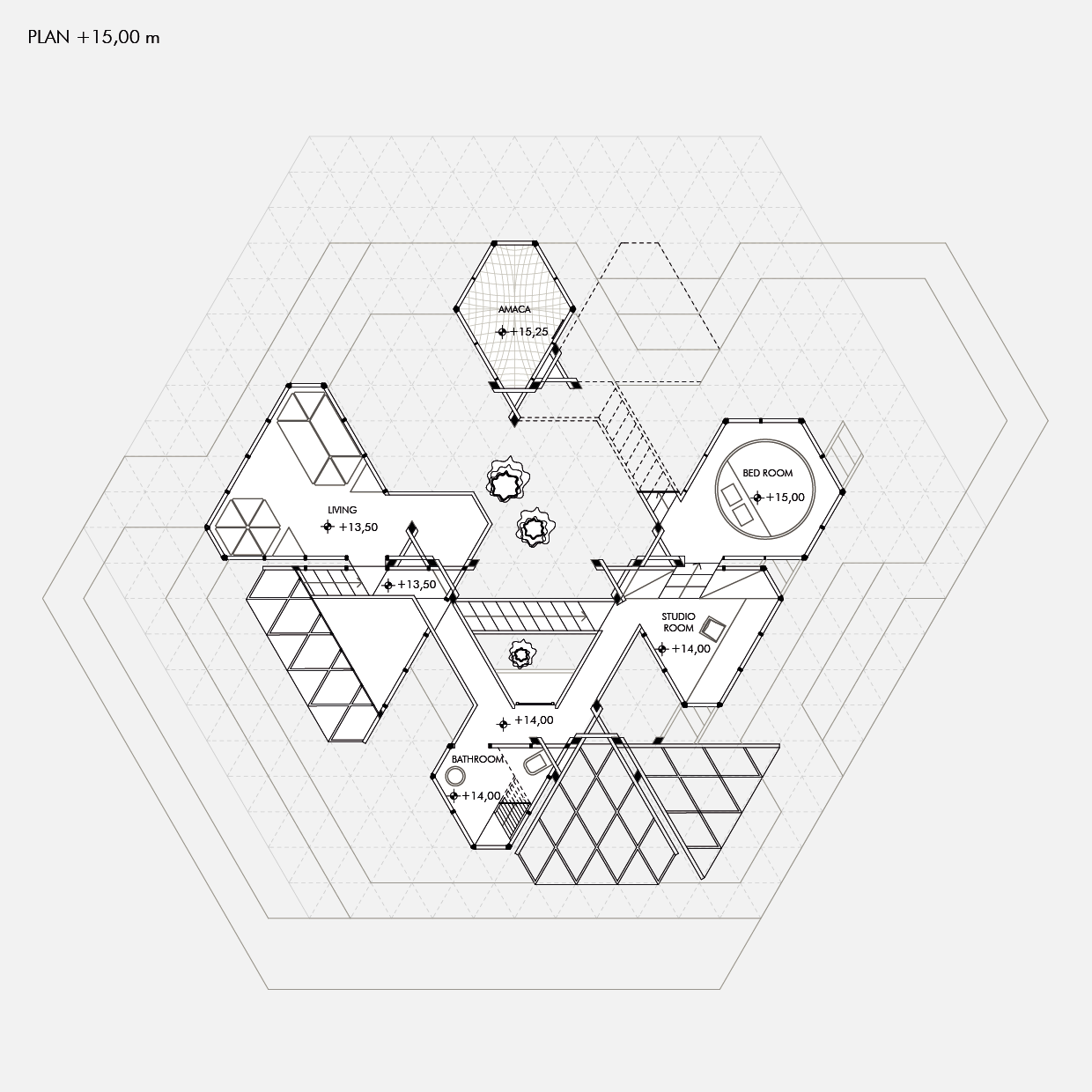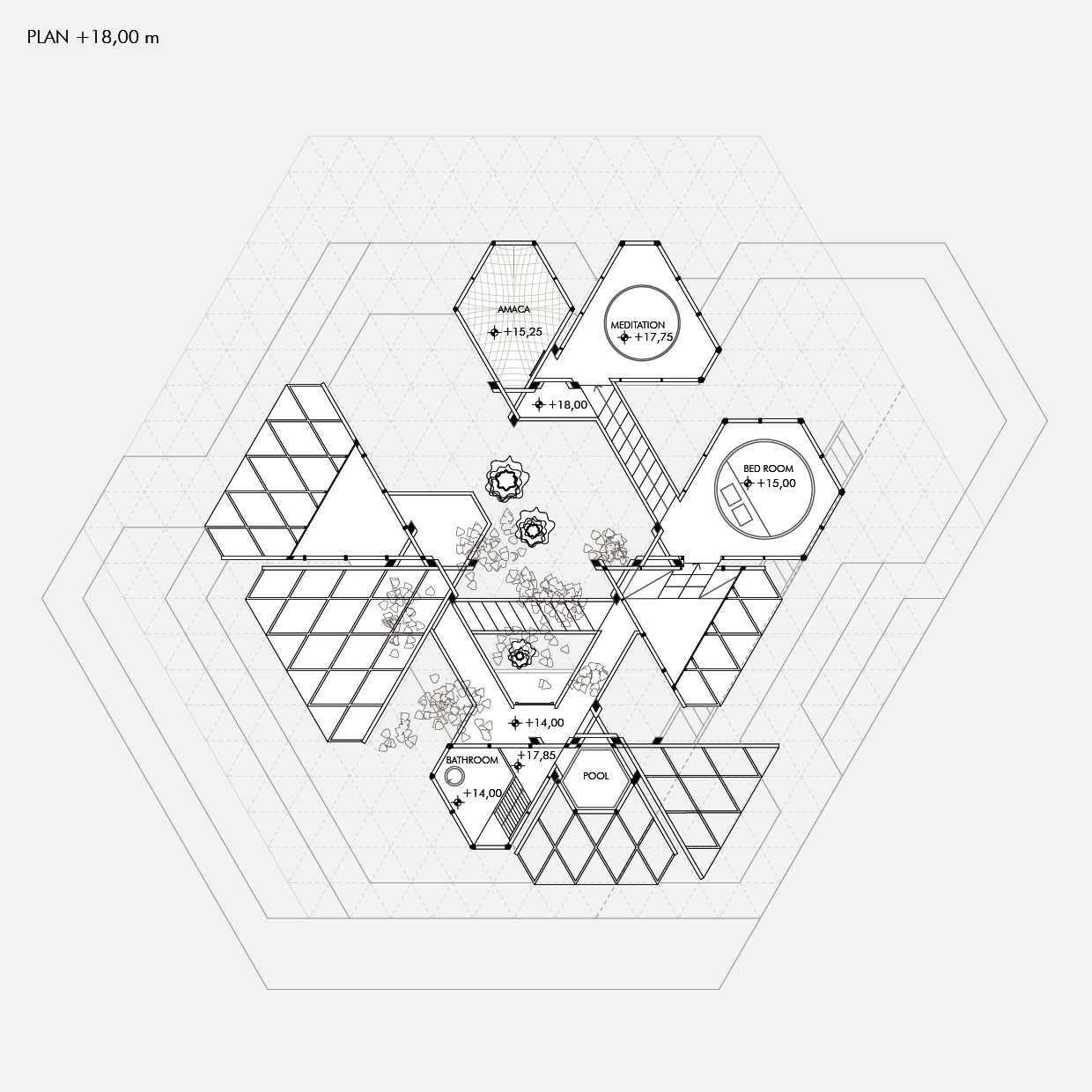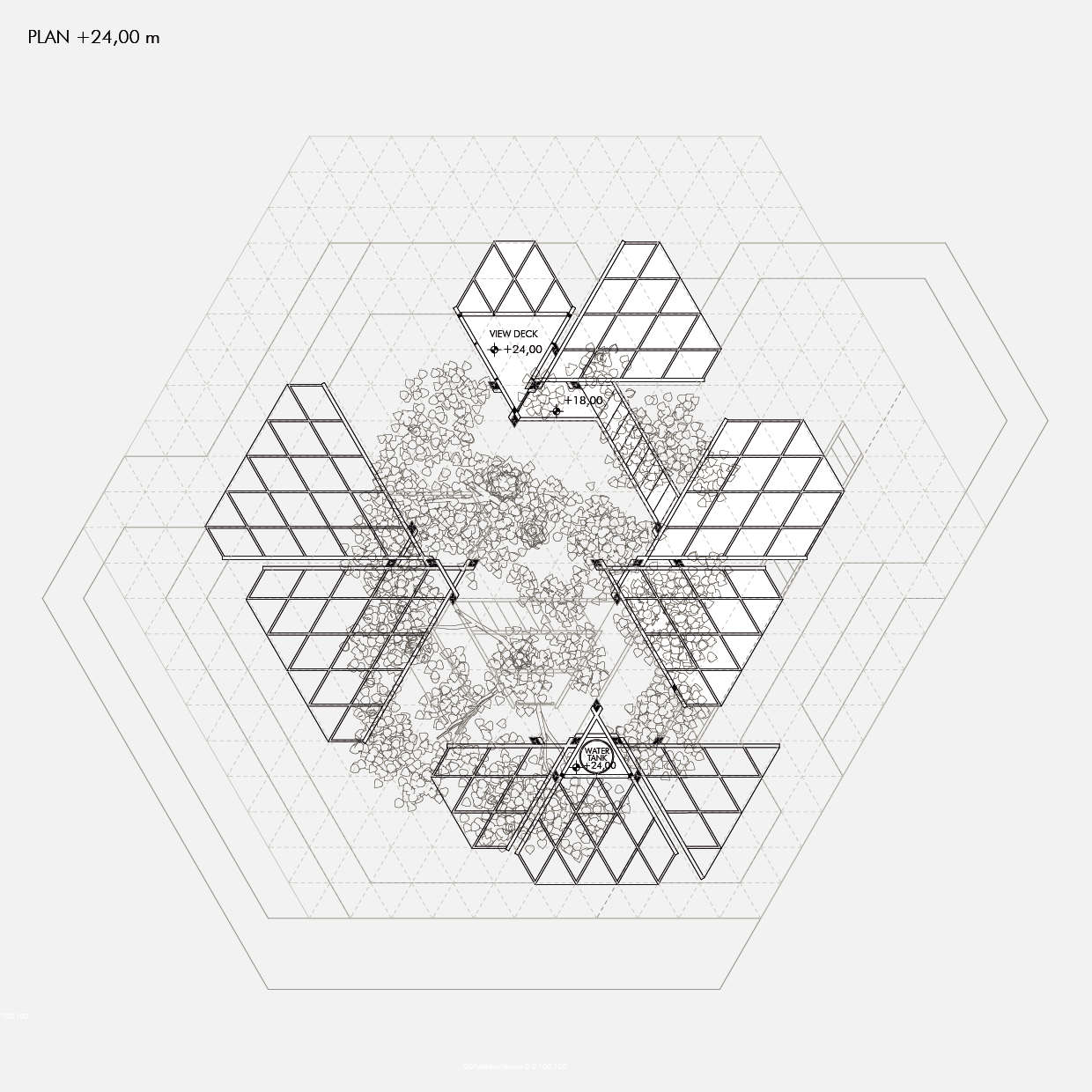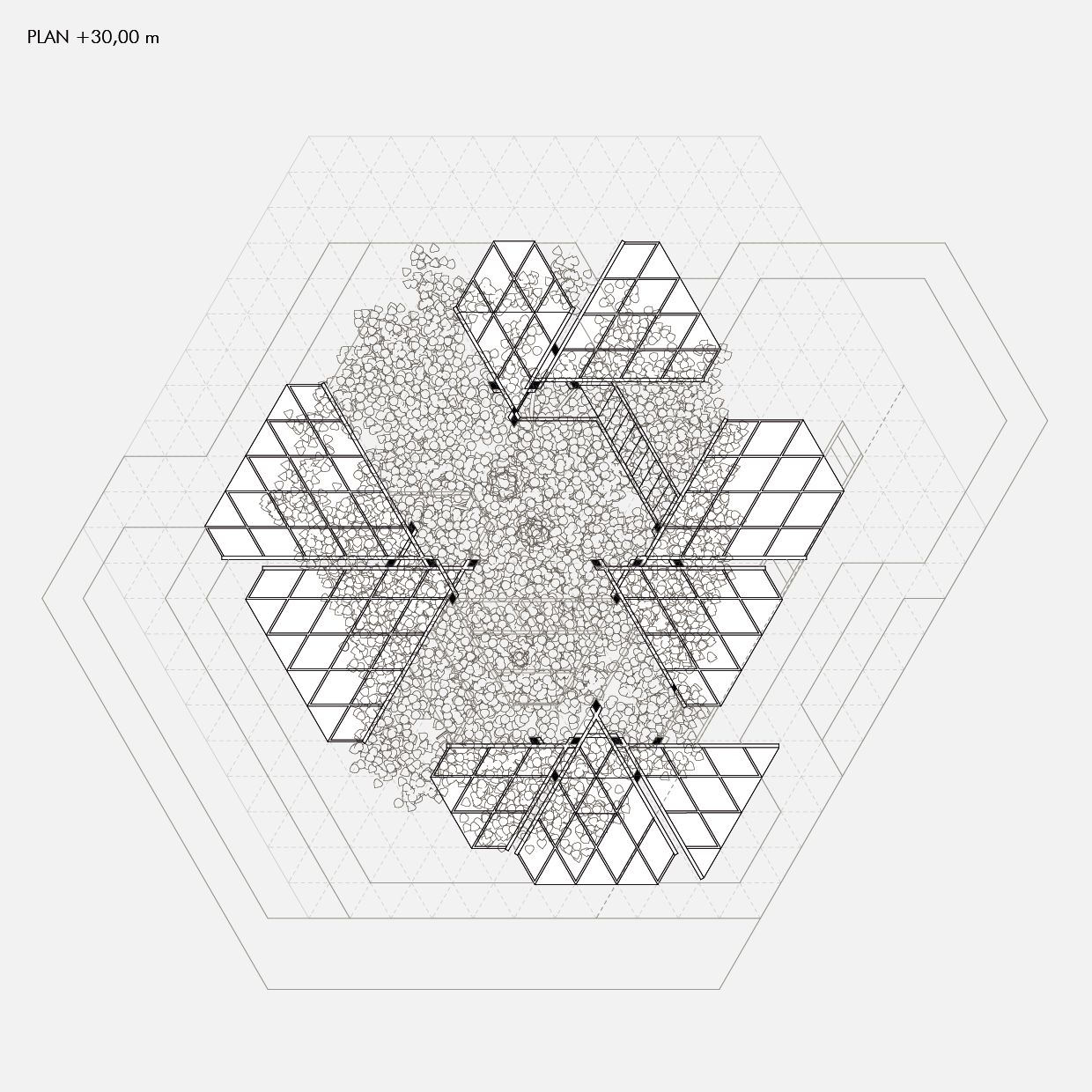WOODEN HOUSE
House in Forest 2020 | Design competition | Second Price
Design team: Andrea Di Stefano, Salvo Mezzasalma, Salvo Pappalardo, Li Hsin


Trees regulate internal temperature through leaves evapotranspiration, which determines water ascent from the roots to the crown due to osmosis, and the cooling down of leaves temperature as their heat is discharged.
Designed for the Cambodian forest near Koh Ker Temple, KK is a tree-house that uses trees cooling mechanism as a model to organize structure, program and systems, and to regulate the building internal temperature in an extremely hot and humid environment.
The house works as a giant sustainable air-conditioning machine: a solar powered pump draws cold water from the aquifer and shoots it into a piping system that branches increasingly and wraps rooms space. Due to convective heat transfer, pipes continuous flow of cold water makes rooms air discharge heat and moisture, so indoor air dries up and cools down. Small blowers along the pipes intensify such phenomenon while they spread air throughout the room. The copious condensation that forms along pipes is eventually collected and stored to feed a vaporizer that helps cool down facades’ temperature.


The building adopts other off-grid strategies: solar panels provide clean energy and cast shadow onto facades. Septic tanks and wetlands treat wastewater locally. The entire structure is made of local wood that is gained after clearing the site to keep the house safe from imminently falling trees. So KK is made of and grows around Sra-Loa trees.

Since the house inhabits three independent trees, the three-level program is subdivided into smaller programmatic cells that are set into clusters and located around and in between trees. Isolated from one another, every cell hosts a specific activity. The consequence is threefold: [i] the cooling system-to-air volume ratio is increased, so it facilitates the cooling down of rooms. [ii] Every single activity can be related to a specific landscape feature, just like trees do when they grow and turn in particular directions in response to external stimuli (tropism). [iii] Separate cells can be arranged at slightly different heights to create a raumplan that exposes people to vertiginous views when moving from one cell to another.


With Italo Calvino’s The Baron in the Trees in mind, novel and ludic spaces and a variety of primary and alternative infrastructures are introduced to creatively connect different programmatic cells. The tree becomes a vertical site enhancing the experience of living its heights: the primary program hangs off the main structure and is enriched with ancillary platforms to meditate, floor-nets to take naps while floating in the void, an external bathtub hanging at some 17m above the ground, as well as balconies and promenades, ramps and stairs, stepladders and fire poles to allow people to cross or climb and quickly descend the tree-house in various and playful ways.




